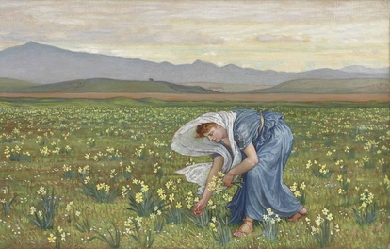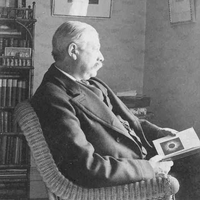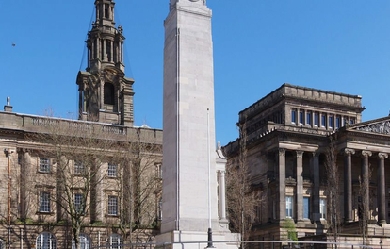
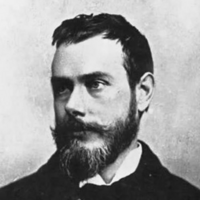
Francis Thompson (16 December 1859– 13 November 1907) was an English poet and ascetic. After attending college, he moved to London to become a writer, but could only find menial work and became addicted to opium, and was a street vagrant for years. A married couple read his poetry and rescued him, publishing his first book Poems in 1893. Thompson lived as an unbalanced invalid in Wales and at Storrington, but wrote three books of poetry, with other works and essays, before dying of tuberculosis in 1907. Life and work Thompson was born in Winckley Street, Preston, Lancashire. His father, Charles, was a doctor who had converted to Roman Catholicism, following his brother Edward Healy Thompson, a friend of Cardinal Manning. Thompson was educated at Ushaw College, near Durham, and then studied medicine at Owens College, now the University of Manchester. He took no real interest in his studies and never practised as a doctor, moving instead to London in 1885, to try to become a writer. Here he was reduced to selling matches and newspapers for a living. During this time, he became addicted to opium, which he first had taken as medicine for ill health. Thompson started living on the streets of Charing Cross and sleeping by the River Thames, with the homeless and other addicts. He was turned down by Oxford University, not because he was unqualified, but because of his drug addiction. Thompson attempted suicide in his nadir of despair, but was saved from completing the action through a vision which he believed to be that of a youthful poet Thomas Chatterton, who had committed suicide almost a century earlier. A prostitute– whose identity Thompson never revealed– befriended him, gave him lodgings and shared her income with him. Thompson was later to describe her in his poetry as his saviour. She soon disappeared, however, never to return, in his estimation because she feared she would taint his growing reputation. In 1888, he had been 'discovered’ after sending his poetry to the magazine Merrie England. He had been sought out by the magazine’s editors, Wilfrid and Alice Meynell. Recognizing the value of his work, the couple gave him a home and arranged for publication of his first book Poems in 1893. The book attracted the attention of sympathetic critics in the St James’s Gazette and other newspapers, and Coventry Patmore wrote a eulogistic notice in the Fortnightly Review of January 1894. Concerned about his opium addiction, which was at its height following his years on the streets, the Meynells sent Thompson to Our Lady of England Priory, Storrington. Thompson subsequently lived as an invalid at Pantasaph, Flintshire in Wales and at Storrington. A lifetime of extreme poverty, ill-health, and an addiction to opium took a heavy toll on Thompson, even though he found success in his last years. He would eventually die from tuberculosis at the age of 47, in the Hospital of St John and St Elizabeth and he is buried in St. Mary’s Roman Catholic Cemetery in Kensal Green. His tomb bears the last line from a poem he wrote for his godson - Look for me in the nurseries of Heaven. Style and influence His most famous poem, The Hound of Heaven, describes the pursuit of the human soul by God. This poem is the source of the phrase “with all deliberate speed,” used by the Supreme Court in Brown II, the remedy phase of the famous decision on school desegregation. A phrase in The Kingdom of God is the source of the title of Han Suyin’s novel Love Is a Many-Splendored Thing. In addition, Thompson wrote the most famous cricket poem, the nostalgic At Lord’s. He also wrote Sister Songs (1895), New Poems (1897), and a posthumously published essay, Shelley (1909). He wrote a treatise On Health and Holiness, dealing with the ascetic life, which was published in 1905. G. K. Chesterton said shortly after his death that “with Francis Thompson we lost the greatest poetic energy since Browning.” Among Thompson’s devotees was the young J. R. R. Tolkien, who purchased a volume of Thompson’s works in 1913-1914, and later said that it was an important influence on his own writing. The American novelist Madeleine L’Engle used a line from the poem The Mistress of Vision as the title of her last Vicki Austin novel, Troubling a Star. In 2011, Thompson’s life was the subject of the stage play and film script HOUND (Visions in the Life of the Poet Francis Thompson) by writer/director Chris Ward, which has been performed in various venues around London. Jack the Ripper suspect In his 1999 book Paradox, Australian author and educator Richard Patterson named Thompson as a possible identity of serial killer Jack the Ripper. On 6 November 2015, Patterson strengthened his claim. Home Thompson’s birthplace, in Winckley Street, Preston is marked by a memorial plaque. The inscription reads: "Francis Thompson poet was born in this house Dec 16 1859. Ever and anon a trumpet sounds, From the hid battlements of eternity." The home in Ashton-under-Lyne where Thompson lived from 1864 to 1885 was also marked with a blue plaque. In 2014, however, the building collapsed. References Wikipedia—https://en.wikipedia.org/wiki/Francis_Thompson

We are asleep. Our life is a dream. But we wake up, sometimes, just enough to know that we are dreaming." — Ludwig Wittgenstein I've spent a lot of time researching religions, history, diffrent points of view, exploring conciousness and life, tring to find the truth for why the world is as bad as it is. This westernized society we live in has corrupted many people and has them living a lie. I know because I was living in it for a long time until i started to see the full spectrum of things. I see a lot of people running from what's inside of them and I see a lot of people caught up in the "matrix". With a lot of my poems I try to help bring people closer to the truth and achieve overall happiness in their lives. I dont expect for many to understand, but I'm here to help the best I can. Helping my brothers and sisters is what I love to do. Because shit, I am you. Liberating minds a rhyme at a time.

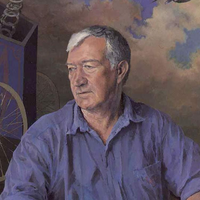
Adrian Mitchell (24 October 1932– 20 December 2008) was an English poet, novelist and playwright. A former journalist, he became a noted figure on the British Left. For almost half a century he was the foremost poet of the country’s anti-Bomb movement. The critic Kenneth Tynan called him “the British Mayakovsky”. Mitchell sought in his work to counteract the implications of his own assertion that, “Most people ignore most poetry because most poetry ignores most people.” In a National Poetry Day poll in 2005 his poem “Human Beings” was voted the one most people would like to see launched into space. In 2002 he was nominated, semi-seriously, Britain’s “Shadow Poet Laureate”. Mitchell was for some years poetry editor of the New Statesman, and was the first to publish an interview with the Beatles. His work for the Royal Shakespeare Company included Peter Brook’s US and the English version of Peter Weiss’s Marat/Sade. Ever inspired by the example of his own favourite poet and precursor William Blake, about whom he wrote the acclaimed Tyger for the National Theatre, his often angry output swirled from anarchistic anti-war satire, through love poetry to, increasingly, stories and poems for children. He also wrote librettos. The Poetry Archive identified his creative yield as hugely prolific. The Times said that Mitchell’s had been a “forthright voice often laced with tenderness.” His poems on such topics as nuclear war, Vietnam, prisons and racism had become “part of the folklore of the Left. His work was often read and sung at demonstrations and rallies.” Biography Early life and career Adrian Mitchell was born near Hampstead Heath, North London. His mother, Kathleen Fabian, was a Fröbel-trained nursery school teacher and his father, Jock Mitchell, a research chemist from Cupar in Fife. He was educated at Monkton Combe School in Bath. He then went to Greenways School, at Ashton Gifford House in Wiltshire, run at the time by a friend of his mother. This, said Mitchell, was “a school in Heaven, where my first play, The Animals’ Brains Trust, was staged when I was nine to my great satisfaction.” His schooling was completed as a boarder at Dauntsey’s School, after which he did his National Service in the RAF. He commented that this “confirmed (his) natural pacificism”. He went on to study English at Christ Church, Oxford, where he was taught by J. R. R. Tolkien’s son. He became chairman of the university’s poetry society and the literary editor of Isis magazine. On graduating Mitchell got a job as a reporter on the Oxford Mail and, later, at the Evening Standard in London. “Inheriting enough money to live on for a year, I wrote my first novel and my first TV play. Soon afterwards I became a freelance journalist, writing about pop music for the Daily Mail and TV for the pre-tabloid Sun and the Sunday Times. I quit journalism in the mid-Sixties and since then have been a free-falling poet, playwright and writer of stories.” Career Mitchell gave frequent public readings, particularly for left-wing causes. Satire was his speciality. Commissioned to write a poem about Prince Charles and his special relationship (as Prince of Wales) with the people of Wales, his measured response was short and to the point: “Royalty is a neurosis. Get well soon.” In “Loose Leaf Poem”, from Ride the Nightmare, he wrote: My brain socialist My heart anarchist My eyes pacifist My blood revolutionary Mitchell was in the habit of stipulating in any preface to his collections: “None of the work in this book is to be used in connection with any examination whatsoever.” His best-known poem, “To Whom It May Concern”, was his bitterly sarcastic reaction to the televised horrors of the Vietnam War. The poem begins: I was run over by the truth one day. Ever since the accident I’ve walked this way So stick my legs in plaster Tell me lies about Vietnam He first read it to thousands of nuclear disarmament protesters who, having marched through central London on CND’s first new format one-day Easter March, finally crammed into Trafalgar Square on the afternoon of Easter Day 1964. As Mitchell delivered his lines from the pavement in front of the National Gallery, angry demonstrators in the square below scuffled with police. In 1972 he confronted then-prime minister Edward Heath about germ warfare and the war in Northern Ireland. He was later responsible for the well-respected stage adaptation of The Lion, the Witch and the Wardrobe, a production of the Royal Shakespeare Company that premiered in November 1998. Over the years he updated the poem to take into account recent events. “He never let up. Most calls—'Can you do this one, Adrian?'—were answered, 'Sure, I’ll be there.' His reading of 'Tell Me Lies’ at a City Hall benefit just before the 2003 invasion of Iraq was electrifying. Of course, he couldn’t stop that war, but he performed as if he could.” One Remembrance Sunday he laid the Peace Pledge Union’s White Poppy wreath on the Cenotaph in Whitehall. On one International Conscientious Objectors’ Day he read a poem at the ceremony at the Conscientious Objectors Commemorative Stone in Tavistock Square in London. Fellow writers could be effusive in their tributes. John Berger said that, “Against the present British state he opposes a kind of revolutionary populism, bawdiness, wit and the tenderness sometimes to be found between animals.” Angela Carter once wrote that he was “a joyous, acrid and demotic tumbling lyricist Pied Piper, determinedly singing us away from catastrophe.” Ted Hughes: “In the world of verse for children, nobody has produced more surprising verse or more genuinely inspired fun than Adrian Mitchell.” Mitchell died at the age of 76 in a North London hospital from a suspected heart attack. For two months he had been suffering from pneumonia. Two days earlier he had completed what turned out to be his last poem, “My Literary Career So Far”. He intended it as a Christmas gift to “all the friends, family and animals he loved”. “Adrian”, said fellow-poet Michael Rosen, “was a socialist and a pacifist who believed, like William Blake, that everything human was holy. That’s to say he celebrated a love of life with the same fervour that he attacked those who crushed life. He did this through his poetry, his plays, his song lyrics and his own performances. Through this huge body of work, he was able to raise the spirits of his audiences, in turn exciting, inspiring, saddening and enthusing them.... He has sung, chanted, whispered and shouted his poems in every kind of place imaginable, urging us to love our lives, love our minds and bodies and to fight against tyranny, oppression and exploitation.” In 2009 Frances Lincoln Children’s Books published an adaptation of Ovid: Shapeshifters: tales from Ovid’s Metamorphoses, written by Mitchell and illustrated by Alan Lee. Family Mitchell is survived by his wife, the actress Celia Hewitt, whose bookshop, Ripping Yarns, is in Highgate, and their two daughters Sasha and Beattie. He also has two sons and a daughter from his previous marriage to Maureen Bush: Briony, Alistair and Danny. There are nine grandchildren: Robin, Arthur, Charlotte, Natasha, Zoe, Caitlin, Annie, Lola and Lilly. Selected bibliography * If You See Me Comin′ (Jonathan Cape, 1962) * Poems (Jonathan Cape, 1964; 978-0224608732) * Out Loud (Cape Goliard, 1968) * Ride the Nightmare (Cape, 1971; ISBN 978-0224005630) * Tyger: A Celebration Based on the Life and Works of William Blake (Cape, 1971; ISBN 978-0224006521) * The Apeman Cometh (Cape, 1975; ISBN 978-0224011471) * Man Friday, novel (Futura, 1975; ISBN 978-0860072744) * For Beauty Douglas: Collected Poems 1953–79, illus. Ralph Steadman (Allison & Busby, 1981; ISBN 978-0850313994) * On the Beach at Cambridge: New Poems (Allison and Busby, 1984; ISBN 978-0850315639) * Nothingmas Day, illus. John Lawrence (Allison & Busby, 1984; ISBN 978-0850315325) * Love Songs of World War Three: Collected Stage Lyrics (Allison and Busby, 1988; ISBN 978-0850319910) * All My Own Stuff, illus. Frances Lloyd (Simon & Schuster, 1991; ISBN 978-0750004466) * Adrian Mitchell’s Greatest Hits– The Top Forty, illus. Ralph Steadman (Bloodaxe Books, 1991; ISBN 978-1852241643) * Blue Coffee: Poems 1985–1996 (Bloodaxe, 1996; 1997 reprint, ISBN 978-1852243623) * Heart on the Left: Poems 1953–1984 (Bloodaxe, 1997; ISBN 978-1852244255) * Balloon Lagoon and Other Magic Islands of Poetry, illus. Tony Ross (Orchard Books, 1997; ISBN 978-1860396595) * Nobody Rides the Unicorn, illus. Stephen Lambert (Corgi Children’s, new edn 2000; ISBN 978-0552546171) * All Shook Up: Poems 1997–2000 (Bloodaxe, 2000; ISBN 978-1852245139) * The Shadow Knows: Poems 2001–2004 (Bloodaxe, 2004) * Tell Me Lies: Poems 2005–2008, illus. Ralph Steadman (Bloodaxe, 2009; ISBN 978-1852248437) * Umpteen Pockets, illus. Tony Ross (Orchard Books, 2009; ISBN 978-1408303634) * Daft as a Doughnut (Orchard Books, 2009; ISBN 978-1408308073) * Shapeshifters: Tales from Ovid’s Metamorphoses, illus. Alan Lee (Frances Lincoln, 2009; ISBN 978-1845075361) * Come on Everybody: Poems 1953–2008 (Bloodaxe, 2012; ISBN 978-1852249465) Awards * * 1961 Eric Gregory Award * 1966 PEN Translation Prize * 1971 Tokyo Festival Television Film Award * 2005 CLPE Poetry Award (shortlist) for Daft as a Doughnut References Wikipedia—https://en.wikipedia.org/wiki/Adrian_Mitchell

I am a confused being not knowing where I belong but I want to touch people with the arts and be touched myself I want to inspire and to be inspired I want to save and be saved and most of all I want to figure out my existence A quote from me although I haven't taken the time to look up if someone has already said this "Life has no logical reason." I have put my email up so for whatever reason if you'd like to email me. I will try my best to respond
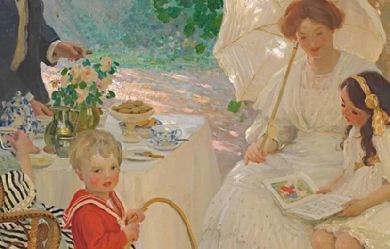
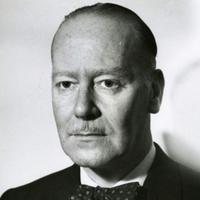
Kenneth Adolf Slessor OBE (27 March 1901– 30 June 1971) was an Australian poet, journalist and official War Correspondent in World War II. He was one of Australia’s leading poets, notable particularly for the absorption of modernist influences into Australian poetry. The Kenneth Slessor Prize for Poetry is named after him. Early life Slessor was born Kenneth Adolphe Schloesser in Orange, New South Wales. As a boy, he lived in England for a time with his parents and in Australia visited the mines of rural New South Wales with his father, a Jewish mining engineer whose father and grandfather had been distinguished musicians in Germany. His family moved to Sydney in 1903. Slessor attended Mowbray House School (1910–1914) and the Sydney Church of England Grammar School (1915–1918), where he began to write poetry. His first published poem was in 1917 about a digger in Europe, remembering Sydney and its icons. Slessor passed the 1918 NSW Leaving Certificate with first-class honours in English and joined the Sydney Sun as a journalist. In 1919, seven of his poems were published. He married for the first time in 1922. Career Slessor made his living as a newspaper journalist, mostly for the Sydney Sun, and was a war correspondent during World War II (1939–1945). Slessor counted Norman Lindsay, Hugh McCrae and Jack Lindsay among his friends. As the Australian Official War Correspondent during World War II, Slessor reported not only from Australia but from Greece, Syria, Libya, Egypt, and New Guinea. Slessor also wrote on rugby league football for the popular publication Smith’s Weekly. Poetry The bulk of Slessor’s poetic work was produced before the end of the Second World War. His poem “Five Bells”—relating to Sydney Harbour, time, the past, memory, and the death of the artist, friend and colleague of Slessor at Smith’s Weekly, Joe Lynch—remains probably his best known poem, followed by “Beach Burial”, a tribute to Australian troops who fought in World War II. In 1965, Australian writer Hal Porter wrote of having met and stayed with Slessor in the 1930s. He described Slessor as: ...a city lover, fastidious and excessively courteous, in those qualities resembles Baudelaire, as he does in being incapable of sentimentalizing over vegetation, in finding in nature something cruel, something bordering on effrontery. He prefers chiselled stone to the disorganization of grass. Awards In the New Year’s Honours of 1959, Slessor was appointed an Officer of the Order of the British Empire (OBE) for services to literature. Personal life At the age of 21, Slessor married 28-year-old Noëla Glasson in Ashfield, Sydney, on 18 August 1922. Noëla died of cancer on 22 October 1945. He married Pauline Wallace in 1951; and a year later celebrated the birth of his only child, Paul Slessor, before the marriage dissolved in 1961. Death He died alone and suddenly of a heart attack on 30 June 1971 at the Mater Misericordiae Hospital, North Sydney. Bibliography Poetry collections * Thief of the Moon, Sydney: Hand press of J. T. Kirtley (1924) * Earth-Visitors, London: Fanfrolico Press (1926) * Trio: a book of poems, with Harley Matthews and Colin Simpson, Sydney: Sunnybrook Press (1931) * Cuckooz Contrey, Sydney: Frank Johnson (1932) * Darlinghurst Nights: and Morning glories: being 47 strange sights, Sydney (1933) * Funny Farmyard: Nursery Rhymes and Painting Book, with drawings by Sydney Miller, Sydney: Frank Johnson (1933) * Five Bells: XX Poems, Sydney: F.C. Johnson (1939) * One Hundred Poems, 1919–1939, Sydney: Angus & Robertson (1944) * “Beach Burial” 1944 * “The Night Ride” * “Sleep” * “Out of Time” 1930 Essays/prose * Bread and Wine, Sydney, Angus & Robertson (1970) Edited * Australian Poetry (1945) * The Penguin Book of Modern Australian Verse (Melbourne, 1961) Recognition Slessor has a street in the Canberra suburb of McKellar named after him. The bells motif in “Five Bells” is referenced at the end of the 1999 song “You Gotta Love This City” by The Whitlams, which also involves a drowning death in Sydney Harbour. Slessor’s poetry was chosen to be placed on the Higher School Certificate English reading lists, and was also examined in the final English exam. References Wikipedia—https://en.wikipedia.org/wiki/Kenneth_Slessor
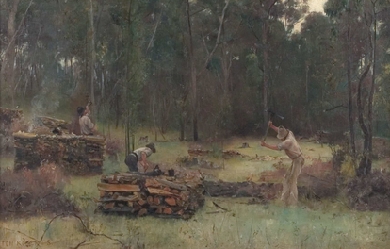
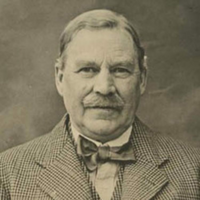
William Henry Ogilvie (21 August 1869– 30 January 1963) was a Scottish-Australian narrative poet and horseman. He was born near Kelso, Borders, Scotland and arrived in Australia in 1889, returning to Scotland after a decade. He had a deep love of horses and riding and he became interested in the outback. Before long he became an expert station hand, drover and horse breaker, working on such stations as Belalie on the Warrego, and Maaoupe near Penola in South Australia. He was a friend of Harry “Breaker” Morant and was described as a quiet-spoken Scot of medium height, with a fair moustache and red complexion.
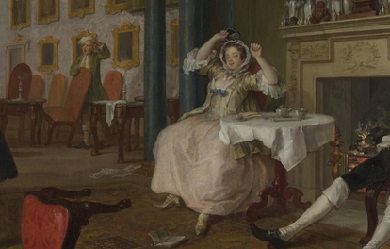
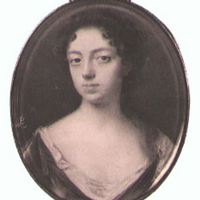
Anne Finch (née Kingsmill), Countess of Winchilsea (April 1661– 5 August 1720), was an English poet, the third child of Sir William Kingsmill of Sydmonton Court and his wife, Anne Haslewood. She was well-educated as her family believed in good education for girls as well as for boys. In 1682, Anne Kingsmill went to St James’s Palace to become a maid of honour to Mary of Modena (wife of James, Duke of York, who later became King James II). There she met the courtier Heneage Finch whom she married on 15 May 1684. It was a happy marriage and Anne wrote several love poems to her husband, most famous perhaps A Letter to Dafnis, though her most well-known works speak on her bouts of depression and her fervent belief in social justice for women. Finch’s works often express a desire for respect as a female poet, lamenting her difficult position as a woman in the literary establishment and the court, while writing of an intense artistic impulse to write despite the difficulties. On 4 August 1712, Charles Finch, 4th Earl of Winchilsea, died childless. This made Anne’s husband, his uncle, the 5th Earl of Winchilsea, and Anne, the Countess of Winchilsea. She died in Westminster in 1720 and was buried at her home at Eastwell, Kent. Works * Did I, my lines intend for public view, How many censures, would their faults pursue, Some would, because such words they do affect, Cry they’re insipid, empty, and uncorrect. And many have attained, dull and untaught, The name of wit only by finding fault. True judges might condemn their want of wit, * And all might say, they’re by a woman writ…" (Finch, The Introduction) * With these lines, written in the poem The Introduction by Anne Finch, Countess of Winchilsea, readers are welcomed into a vibrant, emotional, and opinionated style. They are unapologetically let in on the distinctly female voice that is to come. Melancholy, full of wit, and socially conscious, Anne Finch wrote verse and dramatic literature with a talent that has caused her works to not only survive, but to flourish in an impressive poetic legacy throughout the centuries since her death. * Finch’s range as a writer was vast. She experimented with the poetic traditions of her day, often straying from the fold through her use of rhyme, meter and content, which ranged from the simplistic to the metaphysical. Additionally, Finch wrote several satiric vignettes modelled after the short tales of French fabulist Jean de La Fontaine. She mocked La Fontaine’s fables, offering social criticism through biting sarcasm. Finch’s more melancholy fare, however, gained her wider acclaim. Her famous poems in this sullen vein include A Nocturnal Reverie and Ardelia to Melancholy, both depicting severe depression. Her poetry is often considered to fall in the category of Augustan, reflecting upon nature and finding both an emotional and religious relationship to it in her verse. Finch also skilfully employed the Pindaric ode, exploring complex and irregular structures and rhyme schemes. Her most famous example of this technique is in The Spleen (1709), a poetic expression of depression and its effects: * What art thou, Spleen, which ev’ry thing dost ape? * Thou Proteus to abused mankind, Who never yet thy real cause could find, Or fix thee to remain in one continued shape. Still varying thy perplexing form, Now a Dead Sea thou’lt represent, A calm of stupid discontent, Then, dashing on the rocks wilt rage into a storm. Trembling sometimes thou dost appear, * Dissolved into a panic fear… (Finch, The Spleen) * This poem was first published anonymously, though it went on to become one of her most renowned pieces. As Virginia Woolf, a later proponent of intellectual investigation into Finch’s life and work, once famously wrote, “I would venture to guess that Anon, who wrote so many poems without signing them, was often a woman” (Woolf, A Room of One’s Own). * Anne Finch is known today as one of the most versatile and gifted poets (one of her poems was set to music by Purcell) of her generation. Biography * (The following essay is taken from the Biography Reference Center.) * As a poet, Finch attained a modest amount of notoriety during her lifetime, which spanned the late 17th and early 18th centuries. However, her large body of work, written during the Augustan period (approximately 1660–1760), would earn greater attention after her death. While Finch also authored fables and plays, today she is best known for her poetry: lyric poetry, odes, love poetry and prose poetry. Later literary critics recognised the diversity of her poetic output as well as its personal and intimate style. * In her works Finch drew upon her own observations and experiences, demonstrating an insightful awareness of the social mores and political climate of her era. But she also artfully recorded her private thoughts, which could be joyful or despairing, playful or despondent. The poems also revealed her highly developed spiritual side. * Finch was born Anne Kingsmill in April 1661 in Sydmonton, Hampshire, located in the southern part of England. Her parents were Sir William Kingsmill and Anne Haslewood. She was the youngest of three children. Her siblings included William and Bridget Kingsmill. * The young Anne never knew her father, as he died only five months after she was born. In his will, he specified that his daughters receive financial support equal to that of their brother for their education. Her mother remarried in 1662, to Sir Thomas Ogle, and later bore Anne Kingsmill’s half-sister, Dorothy Ogle. Anne would remain close to Dorothy for most of their lives. * Finch’s mother died in 1664. Shortly before her death she wrote a will giving control of her estate to her second husband. The will was successfully challenged in a Court of Chancery by Anne Kingsmill’s uncle, William Haslewood. Subsequently, Anne and Bridget Kingsmill lived with their grandmother, Lady Kingsmill, in Charing Cross, London, while their brother lived with his uncle William Haslewood. * In 1670 Lady Kingsmill filed her own Court of Chancery suit, demanding from William Haslewood a share in the educational and support monies for Anne and Bridget. The court split custody and financial support between Haslewood and Lady Kingsmill. When Lady Kingsmill died in 1672, Anne and Bridget rejoined their brother to be raised by Haslewood. The sisters received a comprehensive and progressive education, something that was uncommon for females at the time, and Anne Kingsmill learned about Greek and Roman mythology, the Bible, French and Italian languages, history, poetry, and drama. At the court of Charles II * The sisters remained in the Haslewood household until their uncle’s death in 1682. 21 years old at the time, Anne Kingsmill then went to live at St James’s Palace, joining the court of Charles II. She became one of six maids of honour to Mary of Modena, who was the wife of James, Duke of York, who would later become King James II. * Apparently Anne’s interest in poetry began at the palace, and she started writing her own verse. Her friends included Sarah Churchill and Anne Killigrew, two other maids of honour who also shared poetic interests. However, when Anne Kingsmill witnessed the derision within the court that greeted Killigrew’s poetic efforts (poetry was not a pursuit considered suitable for women), she decided to keep her own writing attempts to herself and her close friends. She remained secretive about her poetry until much later in her life, when she was encouraged to publish under her own name. * While residing at court, Anne Kingsmill also met Colonel Heneage Finch, the man who would become her husband. A courtier as well as a soldier, Colonel Finch had been appointed Groom of the Bedchamber to James, Duke of York, in 1683. His family had strong Royalist connections, as well as a pronounced loyalty to the Stuart dynasty, and his grandmother had become Countess of Winchilsea in 1628. Finch met Kingsmill and fell in love with her, but she at first resisted his romantic overtures. However, Finch proved a persistent suitor and the couple was finally married on 15 May 1684. * Upon her marriage, Anne Finch resigned her court position, but her husband retained his own appointment and would serve in various government positions. As such, the couple remained involved in court life. During the 1685 coronation of James II, Heneage Finch carried the canopy of the Queen, Mary of Modena, who had specifically requested his service. * The couple’s marriage proved to be enduring and happy, in part due to the aspects of equality in their partnership. Indeed, part of the development of her poetic skills was brought about by expressing her joy in her love for her husband and the positive effects of his lack of patriarchal impingement on her artistic development. These early works, many written to her husband (such as "A Letter to Dafnis: April 2d 1685"), celebrated their relationship and ardent intimacy. In expressing herself in such a fashion, Anne Finch quietly defied contemporary social conventions. In other early works she aimed a satiric disapproval at prevailing misogynistic attitudes. Still, her husband strongly supported her writing activities. * Despite their court connections, Anne and Heneage Finch led a rather sedate life. At first they lived in Westminster; then, as Heneage Finch became more involved in public affairs, they moved to London. His involvement had increased when James II took the throne in 1685. The couple demonstrated great loyalty to the king in what turned out to be a brief reign. Refusal to take Oath of Allegiance to King William * James II was deposed in 1688 during the “Bloodless Revolution”. During his short reign, James fell under intense criticism for his autocratic manner of rule. Eventually he fled England for exile in Saint-Germain, France. As a result, the British Parliament offered William of Orange the English crown. When the new monarchs, William and Mary, assumed the throne, oaths of allegiance became a requirement for both the public and the clergy. William and Mary were Protestants, and the Finches remained loyal to the Catholic Stuart court, refusing to take the oath. They also viewed their oaths to the previous monarchy as morally binding and constant. But such a stance invited trouble. Heneage Finch lost his government position and retreated from public life. As the loss of his position entailed a loss of income, the Finches were forced to live with friends in London for a period. However, while living in the city the couple faced harassment, fines and potential imprisonment. * In April 1690 Heneage Finch was arrested and charged with Jacobitism for attempting to join the exiled James II in France. It was a difficult time for Jacobites and Nonjurors (those who had refused to take the oath of allegiance, such as the Finches), as their arrests and punishments were abusive. Because of his arrest, Heneage and Anne Finch remained separated from April until November of that year. Understandably, the circumstances caused the couple a great deal of emotional turmoil. Living with friends in Kent while her husband prepared his defence in London, Anne Finch often succumbed to bouts of depression, something that afflicted her for most of her adult life. The poems that she wrote during this period, such as “Ardelia to Melancholy”, reflected her mental state. Other poems involved political themes. But all of her work was noticeably less playful and joyous than her earlier output. Move to country estate * After Heneage Finch was released and his case dismissed, his nephew Charles Finch, the fourth Earl of Winchelsea, invited the couple to permanently move into the family’s Eastwell Park, Kent, estate. The Finches took up residence in late 1690 and found peace and security on the beautiful estate, where they would live for more than 25 years in the quiet countryside. * For Anne Finch, the estate provided a fertile and supportive environment for her literary efforts. Charles Finch was a patron of the arts and, along with Heneage Finch, he encouraged Anne’s writing. Her husband’s support was practical. He began collecting a portfolio of her 56 poems, writing them out by hand and making corrective changes. One significant change involved Anne’s pen name, which Heneage changed from “Areta” to “Ardelia”. * The peace and seclusion at Eastwell fostered the development of Finch’s poetry, and the retirement in the country provided her with her most productive writing period. Her work revealed her growing knowledge of contemporary poetic conventions, and the themes she addressed included metaphysics, the beauty of nature (as expressed in “A Nocturnal Reverie”), and the value of friendship (as in “The Petition for an Absolute Retreat”). Return to public life * By the early 18th century the political climate in England had generally improved for the Finches. King William died in 1702, and his death was followed by the succession to the throne of Queen Anne, the daughter of James II, who had died in 1701. With these developments, the Finches felt ready to embrace a more public lifestyle. Heneage Finch ran for a parliamentary seat three times (in 1701, 1705, and 1710), but was never elected. Still, the Finches felt the time was right to leave the seclusion of the country life and move into a house in London. * In London, Anne Finch was encouraged to publish her poetry under her own name. Earlier, in 1691, she had anonymously published some of her poetry. In 1701 she published “The Spleen” anonymously. This well-received reflection on depression would prove to be the most popular of her poems in her lifetime. When the Finches returned to London, Anne acquired some important and influential friends, including renowned writers such as Jonathan Swift and Alexander Pope, who encouraged her to write and publish much more openly. * She was reluctant, as she felt the current social and political climate remained oppressive as far as women were concerned. (In her poem “The Introduction,” which was privately circulated, she reflected on contemporary attitudes toward female poets.) When she published Miscellany Poems, on Several Occasions in 1713, the cover page of the first printing indicated that the collected works (which included 86 poems as well as a play) were “Written by a Lady.” However, on subsequent printings, Finch (as Anne, Countess of Winchilsea) received credit as the author. Lady Winchilsea * Anne Finch became Countess of Winchilsea upon the sudden and unexpected death of Charles Finch on 4 August 1712. As Charles Finch had no children, his uncle Heneage Finch (died 1726) became the Earl of Winchilsea, making Anne the Countess. However, the titles came with a cost. The Finches had to assume Charles Finch’s financial and legal burdens. The issues were eventually settled in the Finches’ favour in 1720, but not before the couple had endured nearly seven years of emotional strain. * During this period, Heneage and Anne Finch faced renewed strains resulting from court politics. When Queen Anne died in 1714, she was succeeded by George I. Subsequently, a Whig government, which was hostile to the Jacobite cause, rose to power. The Jacobite rebellion, which took place in Scotland in 1715, further aggravated the tense political situation. The Finches became greatly concerned about their safety, especially after a friend, Matthew Prior, who shared their political sympathies, was sent to prison. Deteriorating health * All of her worries combined started to take a toll on Anne Finch’s health, which began to seriously deteriorate. For years she had been vulnerable to depression, and in 1715 she became seriously ill. Her later poems reflected her turmoil. In particular, “A Suplication for the joys of Heaven” and “A Contemplation” expressed her concerns about her life and political and spiritual beliefs. * She died in Westminster, London, and her body was returned to Eastwell for burial, according to her previously stated wishes. Her husband produced an obituary that praised her talents as a writer and her virtues as an individual. A portion of it read, “To draw her Ladyship’s just Character, requires a masterly Pen like her own (She being a fine Writer, and an excellent Poet); we shall only presume to say, she was the most faithful Servant to her Royall Mistresse, the best Wife to her Noble Lord, and in every other Relation, publick and private, so illustrious an Example of such extraordinary Endowments, both of Body and Mind, that the Court of England never bred a more accomplished Lady, nor the Church of England a better Christian.” Poetry rediscovered * The only major collection of Anne Finch’s writings that appeared in her lifetime was Miscellany Poems, on Several Occasions. Nearly a century after her death her poetic output had been largely forgotten, until the great English poet William Wordsworth praised her nature poetry in an essay included in his 1815 volume Lyrical Ballads. * A major collection titled The Poems of Anne, Countess of Winchilsea, edited by Myra Reynolds, was published in 1903. For many years it was considered the definitive collection of her writings. It remains the only scholarly collection of Finch’s poetry, and includes all of the poems from Miscellany Poems and poems retrieved from manuscripts. Further, Reynolds’s impressive introduction did as much to re-establish Finch’s reputation as Wordsworth’s previous praise. * Later, The Wellesley Manuscript, which contained 53 unpublished poems, was released. Literary scholars have noted Finch’s distinctive voice and her poems’ intimacy, sincerity, and spirituality. They also expressed appreciation for her experimentation as well as her assured usage of Augustan diction and forms. * According to James Winn (The Review of English Studies, lix, 2008, pp 67–85) Anne Finch is the librettist of Venus and Adonis, with music by John Blow; the work is considered by some scholars to be the first true opera in the English language. In his critical edition of the opera for the Purcell Society, Bruce Wood agrees with Winn. * In 1929, in her classic essay A Room of One’s Own, Virginia Woolf both critiques Finch’s writing and expresses great admiration for it. In Woolf’s examination of the “female voice” and her search for the history of female writers, she argues that Finch’s writing is “harassed and distracted with hates and grievances,” pointing out that to Finch “men are hated and feared, because they have the power to bar her way to what she wants to do—which is to write.” However, Woolf excuses the flaws she perceives in Finch’s work by claiming that Finch surely had to “encourage herself to write by supposing that what she writes will never be published.” She goes on to acknowledge that in Finch’s work, "Now and again words issue of pure poetry…It was a thousand pities that the woman who could write like that, whose mind was turned to nature, and reflection, should have been forced to anger and bitterness." Woolf goes on in defence of her as a gifted but sometimes understandably misguided example of women’s writing. It is evident that Woolf sympathises deeply with Finch’s plight as a female poet, and though she takes issue with some of the content in Finch’s writing, she expresses grief that Finch is so unknown: "…when one comes to seek out the facts about Lady Winchilsea, one finds, as usual, that almost nothing is known about her." Woolf wishes to know more about “this melancholy lady, who loved wandering in the fields and thinking about unusual things and scorned, so rashly, so unwisely, ‘the dull manage of a servile house.’”
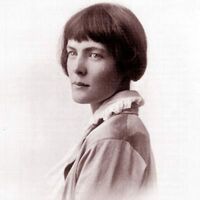
About H.D's Life and Career—An Essay by Bonnie Kime Scott Having rejected Victorian norms for modern experiments, H. D. repeatedly launched out from instructors found among the early canonized male modernists. She developed new lyric, mythic, and mystical forms in poetry and prose, and an alternative bisexual lifestyle that were little appreciated until the 1980s. Her literary contacts included Ezra Pound, Marianne Moore, William Carlos Williams, Ford Madox Ford, May Sinclair, Dorothy Richardson, Richard Aldington, Bryher, D. H. Lawrence, T. S. Eliot, Djuna Barnes, Gertrude Stein, Amy Lowell, Norman Douglas, Edith Sitwell, and Elizabeth Bowen. She was the literary editor of the Egoist (1916-1917), and admired the work of James Joyce and Virginia Woolf. Younger poets like Robert Duncan, Allen Ginsberg, May Sarton, and Denise Levertov took her as a mentor. H. D.'s literary papers are at Beinecke Library, Yale University. Autobiographies H. D. was born into the Moravian community of her artistic, musical mother, Helen (Wolle), in Bethlehem, Pennsylvania, and reared in Upper Darby, a Philadelphia suburb convenient to the University of Pennsylvania. Her astronomer father, Charles, was director of the Flower Observatory there. The Gift (written 1941-1944; published 1982) is cast in the inquiring voice of a child, who is cognizant of several generations of her family, and of her own dreams and fantasies. Her grandmother ultimately bestows a sense of her self-enabling heritage or "gift," and its mystical connection to the Moravians. Mystical access to the past through visions and the reading of "signets"--signs or heiroglyphs requiring patient deciphering--is essential to all of H. D.'s autobiographical writing. H.D.'s autobiographical writings from the middle years of her life are invaluable to the study of the gendered politics of experimental modernism, and the place of the female analysand in psychoanalysis. Ezra Pound entered her life while she was still a schoolgirl in Pennsylvania. In verses written for her, Pound gave her the persona of the "dryad," which persisted among her many self-concepts. They were twice engaged. Barbara Guest has suggested that his tutelage interfered with her studies at Bryn Mawr, which she quit in her second year. She did meet another as yet undeclared poet, Marianne Moore, while there (1904-1906). H. D. joined the same literary circles Pound traveled in when she moved to London in 1911. In a famous incident of 1913, he sent some of her verse to Harriet Monroe's Poetry Magazine, appending the signature "H.D., Imagiste." They served as models of the new poetry he was promoting. End to Torment: A Memoir of Ezra Pound by H. D. (written 1958; published 1979) explores this relationship. With Bid Me to Live (written 1933-1950, published 1960), H. D. writes herself out of what Rachel Blau DuPlessis has called "romantic thralldom" with two other literary men. She married the British poet, Richard Aldington, in 1913. Having enlisted in World War I, his fictional counterpart called for her sustaining letters to the front, yet resented her sharing verses with "Rico," the D. H. Lawrence counterpart, and flaunted his infidelities. Lawrence had a charismatic effect upon H. D. during the war years in London, but discouraged her creation of male subjects in her poetry, and objected to her relationship with Cecil Grey, the painter whom she joined in Cornwall. Grey became the father of her only surviving child, Frances Perdita Aldington (born 1919). H. D. had been anguished over the still-birth of a daughter fathered by Aldington in 1915, and the death of her brother Gilbert at the front. Bid Me to Live was part of a "madrigal cycle," including also Paint it To-Day and Asphodel (neither yet fully published). All of these works intertwined the painful demands of war and love relationships, as does the brilliant long poem, Trilogy (written 1944-1946), with its images of rebirth taken from classical, Egyptian and Christian sources. Tribute to Freud (written 1944; published gradually from 1945-1985) offers a third creative re-vision of male-inspired paradigms. H. D. was analyzed by Freud in 1933 and 1934, in an attempt to overcome writer's block. She also underwent analysis with Hans Sachs in the 1930s, with Erich Heydt in the 1950s, and was treated with intervenous shock therapy, following a major breakdown in 1946. Freud encouraged her to write straight history to breakout of the personal crisis she experienced during World War I. With Bid Me to Live she felt she was escaping also from the influence of psychoanalysis; she did revise Freud's role as analyst to something more like a medium. Spiritualism became an overriding interest in the 1940s. Communication with the dead and projections from another realm were regular tropes in her writing, including her last writing, Hermetic Definition. Bisexuality H.D.'s troubled alliance with Pound was mingled with her love of Frances Josepha Gregg, a student at the Pennsylvania Academy of Fine Arts, and the recipient of some of her earliest poems. Gregg and her mother were H. D.'s companions on the 1911 trip to London. Prefiguring other bisexual triangles she would involve herself in, H. D. planned to accompany Gregg on her honeymoon, but was prevented from doing so by Pound. The strains between lesbian and heterosexual attractions, experienced over the Gregg relationship, entered into H. D.'s novel HERmione (written 1927, the year before Radclyffe Hall's lesbian novel, The Well of Loneliness, was the subject of an obscenity trial; published 1981). The novelist and editor Bryher (Winnifred Ellerman, an heiress to a shipping fortune), was the most significant companion of her mature life. Their relationship survived until H. D.'s death in 1961, spanning Bryher's two marriages of convenience to Robert McAlmon and Kenneth Macpherson, in circumstances that included significant travel and residences mainly in London and Switzerland. H. D. has credited Bryher with saving her life during the final months of her pregnancy in 1919, when she was struck with influenza. Bryher and H. D. traveled to the Scilly Islands together in June 1919, for a month of idyllic companionship; they went to Greece (sailing by Lesbos) with H. D.'s mother in 1922, and traveled to Egypt the next year. The women made a creative trio with the artist and filmmaker Kenneth Macpherson from 1927 to 1932; Macpherson became H. D.'s lover, and Bryher's husband, and the married couple adopted H. D.'s daughter Perdita. Their collaborations included photomontages, the film journal Close Up, to which H. D. supplied poetry and reviews, and Borderline, a film in which H. D. starred with Paul Robeson. The project is one indication of H. D.'s literary connections to the Harlem Renaissance, and her attraction to the margins of modernism. Much of H.D.'s poetry published in the 1930s and 1940s appeared in Life and Letters Today, edited by Bryher. H.D. was well informed about contemporary theories of homosexuality, due both to her analysis by Freud, who pronounced her bisexual, and her friendship with sexologist Havelock Ellis, whom she met in 1919. But she was not limited to their views, particularly in HER. Her shift in interest to mother-daughter dynamics in Notes on Thought and Vision may have been a transference out of Freud's influence. However, Ellis failed to appreciate her revolutionary "bell jar" experiences of pregnancy and the unconscious, recorded in Notes on Thought and Vision, and his lack of enthusiasm may have discouraged her publishing it. Critical Repositioning and Feminist Criticism For many years H. D. was known chiefly for the stark, chiseled images and experimental rhythms of her earliest work, collected as Sea Garden (1916). This fit the imagist program of Ezra Pound. She also had a limited reputation as a classicist and translator of Greek. Feminist critics, led by Susan Stanford Friedman and Rachel Blau DuPlessis, have studied H.D.'s works for feminine lesbian, and bisexual discourses. Since the early 1980s H. D.'s epic and prose writing have received more attention, and work self-suppressed in her own lifetime has been recovered and studied. H. D.'s frequent recourse to the palimpsest can be seen as an escape from binary and hierarchical thinking associated with patriarchy. The term denotes a parchment that retains partially erased parts of earlier writings, which strain productively with new text. She titled a three-part story sequence Palimpsest (written 1923-1924), but the term also applies to her rewritings of her own selfhood in autobiographies, and to her rewritten myths. H. D. can be credited with anticipating the maternal semiotic of Julia Kristeva, and with giving a female voice to classical myths. Sandra Gilbert ("H. D.? Who Was She?," Contemporary Literature 24 [1983]: 496-511) suggests that she developed a "woman's mythology" in Trilogy, Helen in Egypt, and Hermetic Definition. Alicia Ostriker ("Thieves of Language," Signs 8, no. 1 [1982]: 68-90) includes H. D. among women poets who construct new myths to include their selves. H. D.'s Greek texts, culminating in Helen in Egypt, explore the divinity of the goddess, the sexually ecstatic Eleusinian mysteries, and the female version of patriarchal epics. A criticism from Lawrence S. Rainey ("Canon, Gender and Text," Representing Modern Texts, ed. George Bornstein, [1991]) is that in recent years H. D.'s work has been studied for the sake of content conducive to feminist solidarity, rather than aesthetic value. Yet this criticism neglects feminist critics' remarks on the formal devices of mythic mask, palimpsest, and return of the repressed, characteristic of life-writing cure, that moved H. D. beyond confinement to the divisive gender stereotypes of her day.
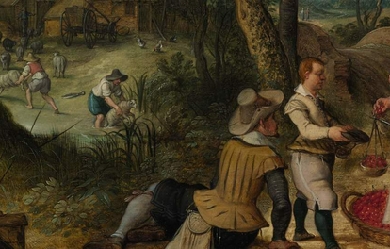
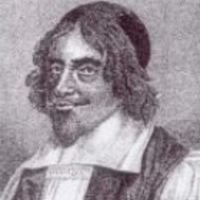
Henry King (1592– 30 September 1669) was an English poet and bishop. Life The older son of John King, Bishop of London, and his wife Joan Freeman, he was baptised at Worminghall, Buckinghamshire, 16 January 1592. He was educated at Lord Williams’s School, Westminster School and in 1608 became a student of Christ Church, Oxford. With his brother John King he matriculated 20 January 1609, and was admitted (19 June 1611 and 7 July 1614) to the degrees of bachelor and master of arts. On 24 January 1616 he was collated to the prebend of St. Pancras in St. Paul’s Cathedral, receiving at the same time the office of penitentiary or confessor in the cathedral, together with the rectory and patronage of Chigwell, Essex. He was made archdeacon of Colchester on 10 April 1617, and soon afterwards received the sinecure rectory of Fulham, in addition to being appointed one of the royal chaplains. All these preferments he held until he was advanced to the episcopal bench. Late in 1617 he preached a sermon at Paul’s Cross. About this time King married Anne, eldest daughter of Robert Berkeley, esq., and granddaughter of Sir Maurice Berkeley. There were four or five children of the marriage, but only two survived. His wife died about 1624, and was buried in St. Paul’s Cathedral, aged just 23. He was a close friend of John Donne, who made him one of his executors, and presented him with his sermons in manuscript, and notes from his reading on over 1400 authors. Other friends were Ben Jonson, George Sandys, Sir Henry Blount, and James Howell. His friendship with Izaak Walton began about 1634, and was lifelong. After his father’s death, on Good Friday 1621, a rumour circulated that he had died in communion with the church of Rome. This was the subject of a two pamphlets attributed to Richard Broughton and George Musket. King preached a sermon refuting this claim on 25 November 1621. He was made canon of Christ Church 3 March 1624, and his brother John was made canon in the following August. On 19 May 1625 they were admitted to the degrees of B.D. and D.D. On 6 February 1639 he was made dean of Rochester, and on 6 February 1642, the day after the House of Lords had passed the bill to deprive the bishops of their votes, he became Bishop of Chichester; he was also presented to the rectory of Petworth in Sussex. He was residing at his episcopal palace when Chichester surrendered to the parliament in 1643, and his library was seized. He was deprived of the rectory of Petworth, which was given by parliament to Francis Cheynell, and by a resolution of the House of Commons, 27 June 1643, his estates were ordered to be sequestrated. From 1643 to 1651 he lived in the house of his brother-in-law, Sir Richard Hobart of Langley, Buckinghamshire. Shortly afterwards King retired to Ritchings, near Langley, the residence of Lady Anne Salter (supposed to be the sister of Brian Duppa, where other members of the King family and John Hales of Eton found refuge. In 1659 King was engaged in negotiations for supplying the vacant bishoprics, and was reinstated at the Restoration, returning to Chichester. On 20 May 1661 he preached at Whitehall, and on 24 April 1662 he delivered an impressive funeral sermon on Bishop Duppa at Westminster Abbey. King died at Chichester 30 September 1669, and was buried in Chichester Cathedral, where the widow of his son John erected a monument to his memory and that of her husband. His second son, Henry, died 21 February 1669; his eldest son, John, died 10 March 1671. Works * King wrote many elegies on royal persons and on his private friends, who included John Donne and Ben Jonson. A selection from his Poems and Psalms was published in 1843. References Wikipedia—https://en.wikipedia.org/wiki/Henry_King_(poet)
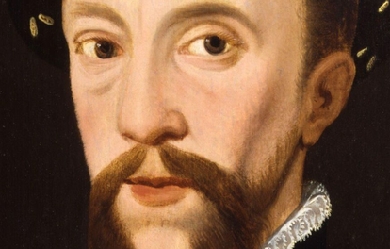
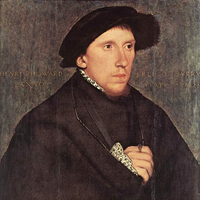
Henry Howard, Earl of Surrey, KG (1516/1517– 19 January 1547), was an English aristocrat, and one of the founders of English Renaissance poetry. He was a first cousin of both Anne Boleyn and Catherine Howard, the second and fifth wives of King Henry VIII. Life He was the eldest son of Thomas Howard, 3rd Duke of Norfolk, and his second wife, the former Lady Elizabeth Stafford (daughter of Edward Stafford, 3rd Duke of Buckingham), so he was descended from kings on both sides of his family tree: King Edward I on his father’s side and King Edward III on his mother’s side. He was reared at Windsor with Henry VIII’s illegitimate son Henry FitzRoy, 1st Duke of Richmond and Somerset, and they became close friends and, later, brothers-in-law upon the marriage of Surrey’s sister to Fitzroy. Like his father and grandfather, he was a brave and able soldier, serving in Henry VIII’s French wars as “Lieutenant General of the King on Sea and Land.” He was repeatedly imprisoned for rash behaviour, on one occasion for striking a courtier, on another for wandering through the streets of London breaking the windows of sleeping people. He became Earl of Surrey in 1524 when his grandfather died and his father became Duke of Norfolk. In 1532 he accompanied his first cousin Anne Boleyn, the King, and the Duke of Richmond to France, staying there for more than a year as a member of the entourage of Francis I of France. In 1536 his first son, Thomas (later 4th Duke of Norfolk), was born, Anne Boleyn was executed on charges of adultery and treason, and the Duke of Richmond died at the age of 17 and was buried at one of the Howard homes, Thetford Abbey. In 1536 Surrey also served with his father against the Pilgrimage of Grace rebellion protesting against the Dissolution of the Monasteries. Literary activity and legacy He and his friend Sir Thomas Wyatt were the first English poets to write in the sonnet form that Shakespeare later used, and Surrey was the first English poet to publish blank verse (unrhymed iambic pentameter) in his translation of the second and fourth books of Virgil’s Aeneid. Together, Wyatt and Surrey, due to their excellent translations of Petrarch’s sonnets, are known as “Fathers of the English Sonnet”. While Wyatt introduced the sonnet into English, it was Surrey who gave them the rhyming meter and the division into quatrains that now characterizes the sonnets variously named English, Elizabethan or Shakespearean sonnets. Death and burial Henry VIII, consumed by paranoia and increasing illness, became convinced that Surrey had planned to usurp the crown from his son Edward. The King had Surrey imprisoned—with his father—sentenced to death on 13 January 1547, and beheaded for treason on 19 January 1547 (his father survived impending execution only by it being set for the day after the king happened to die, though he remained imprisoned). Surrey’s son Thomas became heir to the dukedom of Norfolk instead, inheriting it on the 3rd duke’s death in 1554. He is buried in a spectacular painted alabaster tomb in the church of St Michael the Archangel, Framlingham. Marriage and issue He married Frances de Vere, the daughter of John de Vere, 15th Earl of Oxford, and Elizabeth Trussell. They had two sons and three daughters: Thomas Howard, 4th Duke of Norfolk (10 March 1536– 2 June 1572), married (1) Mary FitzAlan (2) Margaret Audley (3) Elizabeth Leyburne. Henry Howard, 1st Earl of Northampton, who died unmarried. Jane Howard, who married Charles Neville, 6th Earl of Westmorland. Margaret Howard, who married Henry Scrope, 9th Baron Scrope of Bolton. Katherine Howard, who married Henry Berkeley, 7th Baron Berkeley. In popular culture Henry Howard, Earl of Surrey was portrayed by actor David O’Hara in The Tudors, a television series which ran from 2007 to 2010. Ancestry References Wikipedia—https://en.wikipedia.org/wiki/Henry_Howard,_Earl_of_Surrey
I've always put my deepest thoughts into poetry. If it wasn't written down, I did it in my mind. A profound line that sticks with you and reminds you of lessons learned and emotions felt. I had the misfortune of being in a domestically violent relationship in my early 20's and to heal I used it as my muse for my poetry. I now use poetry to heal, grow and evolve. I'm very right-brained and use it as my creative outlet to maintain balance in my life. I write mostly about love lost as that is what gets me to my core. It humbles me and reminds me how much I love giving and receiving love. I know many can relate to a broken heart and that is what connects us. If anyone reads my poetry, whether about heartache or abuse and relates to it, that means we've made a connection. We've bonded and are reminded that we are not alone. If I can do that to just one person with my poetry, then I feel I've made the world a better place. Humans strive for connection and the most I can do is let someone know we are not alone and they too can overcome anything.

Jack Gilbert (February 18, 1925 – November 13, 2012) was an American poet. Born and raised in the Pittsburgh, Pennsylvania neighborhood of East Liberty, he attended Peabody High School then worked as a door-to-door salesman, an exterminator, and a steelworker. He graduated from the University of Pittsburgh in 1954, where he and his classmate Gerald Stern developed a serious interest in poetry and writing. Later, he received his Master's degree from San Francisco State University in 1963. Career His work is distinguished by simple lyricism and straightforward clarity of tone. His first book of poetry, Views of Jeopardy, (1962) won the Yale Younger Poets Prize and was nominated for the Pulitzer Prize, while Gilbert was quickly recognized and made into something of a media darling. He then retreated from his earlier activity in the San Francisco poetry scene, where he had participated in Jack Spicer's Poetry as Magic workshop, and moved to Europe. Living on a Guggenheim Fellowship he toured 15 countries as a lecturer on American Literature for the U.S. State Department and lived in England, Denmark, and Greece. Nearly the whole of his career after the publication of his first book of poetry was marked by what he described as a self-imposed isolation. His books of poetry were few and far between; however he continuously maintained his writing and contributed to The American Poetry Review, Genesis West, The Quarterly, Poetry, Ironwood, The Kenyon Review, and The New Yorker. Personal life Gilbert was a close friend of the poet Linda Gregg who was once his student and with whom he was in a relationship for six years. He was married to Michiko Nogami, another former student and a language instructor based in San Francisco, now deceased, about whom he wrote many of his poems. He was also in a significant long term relationship with the poet Laura Ulewicz during the late fifties and early sixties in San Francisco. Gilbert died on November 13, 2012 in Berkeley, California. He was 87. On April 15, 2013 it was announced that Gilbert's Collected Poems was a finalist for the 2013 Pulitzer Prize in Poetry. The Pulitzer jury's citation read: “a half century of poems reflecting a creative author’s commitment to living fully and honestly and to producing straightforward work that illuminates everyday experience with startling clarity.” Awards 1962 Yale Series of Younger Poets Competition for Views of Jeopardy 1964 Guggenheim Fellowship 1994 Lannan Literary Award for Poetry 1983 Stanley Kunitz Prize for Monolithos 1983 the American Poetry Review Prize for Monolithos 1983 finalist for the Pulitzer Prize for Poetry for Monolithos 2005 National Book Critics Circle Award for Refusing Heaven 2013 finalist for the Pulitzer Prize for Poetry for Collected Poems References Wikipedia - http://en.wikipedia.org/wiki/Jack_Gilbert
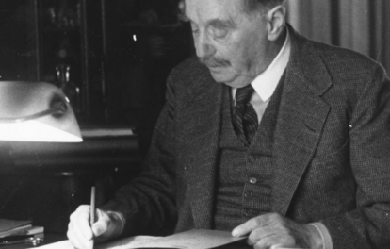
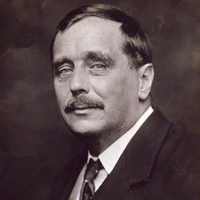
Herbert George Wells (21 September 1866 – 13 August 1946) was an English writer. He was prolific in many genres, writing dozens of novels, short stories, and works of social commentary, history, satire, biography, and autobiography, and even including two books on recreational war games. He is now best remembered for his science fiction novels and is often called the “father of science fiction”, along with Jules Verne and Hugo Gernsback.During his own lifetime, however, he was most prominent as a forward-looking, even prophetic social critic who devoted his literary talents to the development of a progressive vision on a global scale. A futurist, he wrote a number of utopian works and foresaw the advent of aircraft, tanks, space travel, nuclear weapons, satellite television and something resembling the World Wide Web. His science fiction imagined time travel, alien invasion, invisibility, and biological engineering. Brian Aldiss referred to Wells as the “Shakespeare of science fiction”. Wells rendered his works convincing by instilling commonplace detail alongside a single extraordinary assumption – dubbed “Wells’s law” – leading Joseph Conrad to hail him in 1898 as “O Realist of the Fantastic!”. His most notable science fiction works include The Time Machine (1895), The Island of Doctor Moreau (1896), The Invisible Man (1897), The War of the Worlds (1898) and the military science fiction The War in the Air (1907). Wells was nominated for the Nobel Prize in Literature four times.Wells’s earliest specialised training was in biology, and his thinking on ethical matters took place in a specifically and fundamentally Darwinian context. He was also from an early date an outspoken socialist, often (but not always, as at the beginning of the First World War) sympathising with pacifist views. His later works became increasingly political and didactic, and he wrote little science fiction, while he sometimes indicated on official documents that his profession was that of journalist. Novels such as Kipps and The History of Mr Polly, which describe lower-middle-class life, led to the suggestion that he was a worthy successor to Charles Dickens, but Wells described a range of social strata and even attempted, in Tono-Bungay (1909), a diagnosis of English society as a whole. Wells was a diabetic and co-founded the charity The Diabetic Association (known today as Diabetes UK) in 1934. Life Early life Herbert George Wells was born at Atlas House, 162 High Street in Bromley, Kent, on 21 September 1866. Called “Bertie” in the family, he was the fourth and last child of Joseph Wells (a former domestic gardener, and at the time a shopkeeper and professional cricketer) and his wife, Sarah Neal (a former domestic servant). An inheritance had allowed the family to acquire a shop in which they sold china and sporting goods, although it failed to prosper: the stock was old and worn out, and the location was poor. Joseph Wells managed to earn a meagre income, but little of it came from the shop and he received an unsteady amount of money from playing professional cricket for the Kent county team. Payment for skilled bowlers and batsmen came from voluntary donations afterwards, or from small payments from the clubs where matches were played. A defining incident of young Wells’s life was an accident in 1874 that left him bedridden with a broken leg. To pass the time he began to read books from the local library, brought to him by his father. He soon became devoted to the other worlds and lives to which books gave him access; they also stimulated his desire to write. Later that year he entered Thomas Morley’s Commercial Academy, a private school founded in 1849, following the bankruptcy of Morley’s earlier school. The teaching was erratic, the curriculum mostly focused, Wells later said, on producing copperplate handwriting and doing the sort of sums useful to tradesmen. Wells continued at Morley’s Academy until 1880. In 1877, his father, Joseph Wells, suffered a fractured thigh. The accident effectively put an end to Joseph’s career as a cricketer, and his subsequent earnings as a shopkeeper were not enough to compensate for the loss of the primary source of family income. No longer able to support themselves financially, the family instead sought to place their sons as apprentices in various occupations. From 1880 to 1883, Wells had an unhappy apprenticeship as a draper at the Southsea Drapery Emporium, Hyde’s. His experiences at Hyde’s, where he worked a thirteen-hour day and slept in a dormitory with other apprentices, later inspired his novels The Wheels of Chance, The History of Mr Polly, and Kipps, which portray the life of a draper’s apprentice as well as providing a critique of society’s distribution of wealth.Wells’s parents had a turbulent marriage, owing primarily to his mother’s being a Protestant and his father’s being a freethinker. When his mother returned to work as a lady’s maid (at Uppark, a country house in Sussex), one of the conditions of work was that she would not be permitted to have living space for her husband and children. Thereafter, she and Joseph lived separate lives, though they never divorced and remained faithful to each other. As a consequence, Herbert’s personal troubles increased as he subsequently failed as a draper and also, later, as a chemist’s assistant. However, Uppark had a magnificent library in which he immersed himself, reading many classic works, including Plato’s Republic, Thomas More’s Utopia, and the works of Daniel Defoe. This would be the beginning of Wells’s venture into literature. Teacher In October 1879, Wells’s mother arranged through a distant relative, Arthur Williams, for him to join the National School at Wookey in Somerset as a pupil–teacher, a senior pupil who acted as a teacher of younger children. In December that year, however, Williams was dismissed for irregularities in his qualifications and Wells was returned to Uppark. After a short apprenticeship at a chemist in nearby Midhurst and an even shorter stay as a boarder at Midhurst Grammar School, he signed his apprenticeship papers at Hyde’s. In 1883, Wells persuaded his parents to release him from the apprenticeship, taking an opportunity offered by Midhurst Grammar School again to become a pupil–teacher; his proficiency in Latin and science during his earlier short stay had been remembered.The years he spent in Southsea had been the most miserable of his life to that point, but his good fortune at securing a position at Midhurst Grammar School meant that Wells could continue his self-education in earnest. The following year, Wells won a scholarship to the Normal School of Science (later the Royal College of Science in South Kensington, now part of Imperial College London) in London, studying biology under Thomas Henry Huxley. As an alumnus, he later helped to set up the Royal College of Science Association, of which he became the first president in 1909. Wells studied in his new school until 1887, with a weekly allowance of 21 shillings (a guinea) thanks to his scholarship. This ought to have been a comfortable sum of money (at the time many working class families had “round about a pound a week” as their entire household income) yet in his Experiment in Autobiography, Wells speaks of constantly being hungry, and indeed photographs of him at the time show a youth who is very thin and malnourished. He soon entered the Debating Society of the school. These years mark the beginning of his interest in a possible reformation of society. At first approaching the subject through Plato’s Republic, he soon turned to contemporary ideas of socialism as expressed by the recently formed Fabian Society and free lectures delivered at Kelmscott House, the home of William Morris. He was also among the founders of The Science School Journal, a school magazine that allowed him to express his views on literature and society, as well as trying his hand at fiction; a precursor to his novel The Time Machine was published in the journal under the title The Chronic Argonauts. The school year 1886–87 was the last year of his studies.During 1888, Wells stayed in Stoke-on-Trent, living in Basford. The unique environment of The Potteries was certainly an inspiration. He wrote in a letter to a friend from the area that “the district made an immense impression on me.” The inspiration for some of his descriptions in The War of the Worlds is thought to have come from his short time spent here, seeing the iron foundry furnaces burn over the city, shooting huge red light into the skies. His stay in The Potteries also resulted in the macabre short story “The Cone” (1895, contemporaneous with his famous The Time Machine), set in the north of the city.After teaching for some time, he was briefly on the staff of Holt Academy in Wales – Wells found it necessary to supplement his knowledge relating to educational principles and methodology and entered the College of Preceptors (College of Teachers). He later received his Licentiate and Fellowship FCP diplomas from the College. It was not until 1890 that Wells earned a Bachelor of Science degree in zoology from the University of London External Programme. In 1889–90, he managed to find a post as a teacher at Henley House School in London, where he taught A. A. Milne (whose father ran the school). His first published work was a Text-Book of Biology in two volumes (1893).Upon leaving the Normal School of Science, Wells was left without a source of income. His aunt Mary—his father’s sister-in-law—invited him to stay with her for a while, which solved his immediate problem of accommodation. During his stay at his aunt’s residence, he grew increasingly interested in her daughter, Isabel. He would later go on to court her. To earn money, he began writing short humorous articles for journals such as The Pall Mall Gazette, later collecting these in volume form as Select Conversations with an Uncle (1895) and Certain Personal Matters (1897). So prolific did Wells become at this mode of journalism that many of his early pieces remain unidentified. According to David C Smith, "Most of Wells’s occasional pieces have not been collected, and many have not even been identified as his. Wells did not automatically receive the byline his reputation demanded until after 1896 or so... As a result, many of his early pieces are unknown. It is obvious that many early Wells items have been lost." His success with these shorter pieces encouraged him to write book-length work, and he published his first novel, The Time Machine, in 1895. Personal life In 1891, Wells married his cousin Isabel Mary Wells (1865–1931; from 1902 Isabel Mary Smith). The couple agreed to separate in 1894, when he had fallen in love with one of his students, Amy Catherine Robbins (1872–1927; later known as Jane), with whom he moved to Woking, Surrey in May 1895. They lived in a rented house, 'Lynton’, (now No.141) Maybury Road in the town centre for just under 18 months and married at St Pancras register office in October 1895. His short period in Woking was perhaps the most creative and productive of his whole writing career, for while there he planned and wrote The War of the Worlds and The Time Machine, completed The Island of Doctor Moreau, wrote and published The Wonderful Visit and The Wheels of Chance, and began writing two other early books, When the Sleeper Wakes and Love and Mr Lewisham.In late summer 1896, Wells and Jane moved to a larger house in Worcester Park, near Kingston upon Thames, for two years; this lasted until his poor health took them to Sandgate, near Folkestone, where he constructed a large family home, Spade House, in 1901. He had two sons with Jane: George Philip (known as “Gip”; 1901–1985) and Frank Richard (1903–1982). Jane died 6 October 1927, in Dunmow, at the age of 55. Wells had affairs with a significant number of women. In December 1909, he had a daughter, Anna-Jane, with the writer Amber Reeves, whose parents, William and Maud Pember Reeves, he had met through the Fabian Society. Amber had married the barrister G. R. Blanco White in July of that year, as co-arranged by Wells. After Beatrice Webb voiced disapproval of Wells’ “sordid intrigue” with Amber, he responded by lampooning Beatrice Webb and her husband Sidney Webb in his 1911 novel The New Machiavelli as 'Altiora and Oscar Bailey’, a pair of short-sighted, bourgeois manipulators. Between 1910–1913, novelist Elizabeth von Arnim was one of his mistresses. In 1914, he had a son, Anthony West (1914–1987), by the novelist and feminist Rebecca West, 26 years his junior. In 1920–21, and intermittently until his death, he had a love affair with the American birth control activist Margaret Sanger. Between 1924 and 1933 he partnered with the 22-year younger Dutch adventurer and writer Odette Keun, with whom he lived in Lou Pidou, a house they built together in Grasse, France. Wells dedicated his longest book to her (The World of William Clissold, 1926). When visiting Maxim Gorky in Russia 1920, he had slept with Gorky’s mistress Moura Budberg, then still Countess Benckendorf and 27 years his junior. In 1933, when she left Gorky and emigrated to London, their relationship renewed and she cared for him through his final illness. Wells asked her to marry him repeatedly, but Budberg strongly rejected his proposals.In Experiment in Autobiography (1934), Wells wrote: “I was never a great amorist, though I have loved several people very deeply”.David Lodge’s novel A Man of Parts (2011)—a 'narrative based on factual sources’ (author’s note)—gives a convincing and generally sympathetic account of Wells’s relations with the women mentioned above, and others.Director Simon Wells (born 1961), the author’s great-grandson, was a consultant on the future scenes in Back to the Future Part II (1989). Artist One of the ways that Wells expressed himself was through his drawings and sketches. One common location for these was the endpapers and title pages of his own diaries, and they covered a wide variety of topics, from political commentary to his feelings toward his literary contemporaries and his current romantic interests. During his marriage to Amy Catherine, whom he nicknamed Jane, he drew a considerable number of pictures, many of them being overt comments on their marriage. During this period, he called these pictures “picshuas”. These picshuas have been the topic of study by Wells scholars for many years, and in 2006, a book was published on the subject. Writer Some of his early novels, called “scientific romances”, invented several themes now classic in science fiction in such works as The Time Machine, The Island of Doctor Moreau, The Invisible Man, The War of the Worlds, When the Sleeper Wakes, and The First Men in the Moon. He also wrote realistic novels that received critical acclaim, including Kipps and a critique of English culture during the Edwardian period, Tono-Bungay. Wells also wrote dozens of short stories and novellas, including, “The Flowering of the Strange Orchid”, which helped bring the full impact of Darwin’s revolutionary botanical ideas to a wider public, and was followed by many later successes such as “The Country of the Blind” (1904).According to James Gunn, one of Wells’s major contributions to the science fiction genre was his approach, which he referred to as his “new system of ideas”. In his opinion, the author should always strive to make the story as credible as possible, even if both the writer and the reader knew certain elements are impossible, allowing the reader to accept the ideas as something that could really happen, today referred to as “the plausible impossible” and “suspension of disbelief”. While neither invisibility nor time travel was new in speculative fiction, Wells added a sense of realism to the concepts which the readers were not familiar with. He conceived the idea of using a vehicle that allows an operator to travel purposely and selectively forwards or backwards in time. The term “time machine”, coined by Wells, is now almost universally used to refer to such a vehicle. He explained that while writing The Time Machine, he realized that “the more impossible the story I had to tell, the more ordinary must be the setting, and the circumstances in which I now set the Time Traveller were all that I could imagine of solid upper-class comforts.” In “Wells’s Law”, a science fiction story should contain only a single extraordinary assumption. Being aware the notion of magic as something real had disappeared from society, he, therefore, used scientific ideas and theories as a substitute for magic to justify the impossible. Wells’s best-known statement of the “law” appears in his introduction to The Scientific Romances of H. G. Wells (1933), As soon as the magic trick has been done the whole business of the fantasy writer is to keep everything else human and real. Touches of prosaic detail are imperative and a rigorous adherence to the hypothesis. Any extra fantasy outside the cardinal assumption immediately gives a touch of irresponsible silliness to the invention. Dr. Griffin / The Invisible Man is a brilliant research scientist who discovers a method of invisibility, but finds himself unable to reverse the process. An enthusiast of random and irresponsible violence, Griffin has become an iconic character in horror fiction. The Island of Doctor Moreau sees a shipwrecked man left on the island home of Doctor Moreau, a mad scientist who creates human-like hybrid beings from animals via vivisection. The earliest depiction of uplift, the novel deals with a number of philosophical themes, including pain and cruelty, moral responsibility, human identity, and human interference with nature. Though Tono-Bungay is not a science-fiction novel, radioactive decay plays a small but consequential role in it. Radioactive decay plays a much larger role in The World Set Free (1914). This book contains what is surely his biggest prophetic “hit”, with the first description of a nuclear weapon. Scientists of the day were well aware that the natural decay of radium releases energy at a slow rate over thousands of years. The rate of release is too slow to have practical utility, but the total amount released is huge. Wells’s novel revolves around an (unspecified) invention that accelerates the process of radioactive decay, producing bombs that explode with no more than the force of ordinary high explosives—but which “continue to explode” for days on end. “Nothing could have been more obvious to the people of the earlier twentieth century”, he wrote, "than the rapidity with which war was becoming impossible... [but] they did not see it until the atomic bombs burst in their fumbling hands". In 1932, the physicist and conceiver of nuclear chain reaction Leó Szilárd read The World Set Free (the same year Sir James Chadwick discovered the neutron), a book which he said made a great impression on him. Wells also wrote non-fiction. His first non-fiction bestseller was Anticipations of the Reaction of Mechanical and Scientific Progress upon Human Life and Thought (1901). When originally serialised in a magazine it was subtitled “An Experiment in Prophecy”, and is considered his most explicitly futuristic work. It offered the immediate political message of the privileged sections of society continuing to bar capable men from other classes from advancement until war would force a need to employ those most able, rather than the traditional upper classes, as leaders. Anticipating what the world would be like in the year 2000, the book is interesting both for its hits (trains and cars resulting in the dispersion of populations from cities to suburbs; moral restrictions declining as men and women seek greater sexual freedom; the defeat of German militarism, and the existence of a European Union) and its misses (he did not expect successful aircraft before 1950, and averred that “my imagination refuses to see any sort of submarine doing anything but suffocate its crew and founder at sea”).His bestselling two-volume work, The Outline of History (1920), began a new era of popularised world history. It received a mixed critical response from professional historians. However, it was very popular amongst the general population and made Wells a rich man. Many other authors followed with “Outlines” of their own in other subjects. He reprised his Outline in 1922 with a much shorter popular work, A Short History of the World, a history book praised by Albert Einstein, and two long efforts, The Science of Life (1930) and The Work, Wealth and Happiness of Mankind (1931). The “Outlines” became sufficiently common for James Thurber to parody the trend in his humorous essay, “An Outline of Scientists”—indeed, Wells’s Outline of History remains in print with a new 2005 edition, while A Short History of the World has been re-edited (2006). From quite early in Wells’s career, he sought a better way to organise society and wrote a number of Utopian novels. The first of these was A Modern Utopia (1905), which shows a worldwide utopia with “no imports but meteorites, and no exports at all”; two travellers from our world fall into its alternate history. The others usually begin with the world rushing to catastrophe, until people realise a better way of living: whether by mysterious gases from a comet causing people to behave rationally and abandoning a European war (In the Days of the Comet (1906)), or a world council of scientists taking over, as in The Shape of Things to Come (1933, which he later adapted for the 1936 Alexander Korda film, Things to Come). This depicted, all too accurately, the impending World War, with cities being destroyed by aerial bombs. He also portrayed the rise of fascist dictators in The Autocracy of Mr Parham (1930) and The Holy Terror (1939). Men Like Gods (1923) is also a utopian novel. Wells in this period was regarded as an enormously influential figure; the critic Malcolm Cowley stated: “by the time he was forty, his influence was wider than any other living English writer”.Wells contemplates the ideas of nature and nurture and questions humanity in books such as The Island of Doctor Moreau. Not all his scientific romances ended in a Utopia, and Wells also wrote a dystopian novel, When the Sleeper Wakes (1899, rewritten as The Sleeper Awakes, 1910), which pictures a future society where the classes have become more and more separated, leading to a revolt of the masses against the rulers. The Island of Doctor Moreau is even darker. The narrator, having been trapped on an island of animals vivisected (unsuccessfully) into human beings, eventually returns to England; like Gulliver on his return from the Houyhnhnms, he finds himself unable to shake off the perceptions of his fellow humans as barely civilised beasts, slowly reverting to their animal natures.Wells also wrote the preface for the first edition of W. N. P. Barbellion’s diaries, The Journal of a Disappointed Man, published in 1919. Since “Barbellion” was the real author’s pen name, many reviewers believed Wells to have been the true author of the Journal; Wells always denied this, despite being full of praise for the diaries. In 1927, a Canadian teacher and writer Florence Deeks unsuccessfully sued Wells for infringement of copyright and breach of trust, claiming that much of The Outline of History had been plagiarised from her unpublished manuscript, The Web of the World’s Romance, which had spent nearly nine months in the hands of Wells’s Canadian publisher, Macmillan Canada. However, it was sworn on oath at the trial that the manuscript remained in Toronto in the safekeeping of Macmillan, and that Wells did not even know it existed, let alone had seen it. The court found no proof of copying, and decided the similarities were due to the fact that the books had similar nature and both writers had access to the same sources. In 2000, A. B. McKillop, a professor of history at Carleton University, produced a book on the case, The Spinster & The Prophet: Florence Deeks, H. G. Wells, and the Mystery of the Purloined Past. According to McKillop, the lawsuit was unsuccessful due to the prejudice against a woman suing a well-known and famous male author, and he paints a detailed story based on the circumstantial evidence of the case. In 2004, Denis N. Magnusson, Professor Emeritus of the Faculty of Law, Queen’s University, Ontario, published an article on Deeks v. Wells. This re-examines the case in relation to McKillop’s book. While having some sympathy for Deeks, he argues that she had a weak case that was not well presented, and though she may have met with sexism from her lawyers, she received a fair trial, adding that the law applied is essentially the same law that would be applied to a similar case today (i.e., 2004).In 1933, Wells predicted in The Shape of Things to Come that the world war he feared would begin in January 1940, a prediction which ultimately came true four months early, in September 1939, with the outbreak of World War II. In 1936, before the Royal Institution, Wells called for the compilation of a constantly growing and changing World Encyclopaedia, to be reviewed by outstanding authorities and made accessible to every human being. In 1938, he published a collection of essays on the future organisation of knowledge and education, World Brain, including the essay “The Idea of a Permanent World Encyclopaedia”. Prior to 1933, Wells’s books were widely read in Germany and Austria, and most of his science fiction works had been translated shortly after publication. By 1933, he had attracted the attention of German officials because of his criticism of the political situation in Germany, and on 10 May 1933, Wells’s books were burned by the Nazi youth in Berlin’s Opernplatz, and his works were banned from libraries and book stores. Wells, as president of PEN International (Poets, Essayists, Novelists), angered the Nazis by overseeing the expulsion of the German PEN club from the international body in 1934 following the German PEN’s refusal to admit non-Aryan writers to its membership. At a PEN conference in Ragusa, Wells refused to yield to Nazi sympathisers who demanded that the exiled author Ernst Toller be prevented from speaking. Near the end of the World War II, Allied forces discovered that the SS had compiled lists of people slated for immediate arrest during the invasion of Britain in the abandoned Operation Sea Lion, with Wells included in the alphabetical list of “The Black Book”.Seeking a more structured way to play war games, Wells also wrote Floor Games (1911) followed by Little Wars (1913), which set out rules for fighting battles with toy soldiers (miniatures). Little Wars is recognised today as the first recreational war game and Wells is regarded by gamers and hobbyists as “the Father of Miniature War Gaming”. A pacifist prior to the First World War, Wells stated "how much better is this amiable miniature [war] than the real thing". According to Wells, the idea of the miniature war game developed from a visit by his friend Jerome K. Jerome. After dinner, Jerome began shooting down toy soldiers with a toy cannon and Wells joined in to compete. Travels to Russia Wells visited Russia three times: 1914, 1920 and 1934. During his second visit, he saw his old friend Maxim Gorky and with Gorky’s help, met Vladimir Lenin. In his book Russia in the Shadows, Wells portrayed Russia as recovering from a total social collapse, “the completest that has ever happened to any modern social organisation.” On 23 July 1934, after visiting U.S. President Franklin D. Roosevelt, Wells went to the Soviet Union and interviewed Joseph Stalin for three hours for the New Statesman magazine, which was extremely rare at that time. He told Stalin how he had seen 'the happy faces of healthy people’ in contrast with his previous visit to Moscow in 1920. However, he also criticised the lawlessness, class-based discrimination, state violence, and absence of free expression. Stalin enjoyed the conversation and replied accordingly. As the chairman of the London-based PEN Club, which protected the rights of authors to write without being intimidated, Wells hoped by his trip to USSR, he could win Stalin over by force of argument. Before he left, he realized that no reform was to happen in the near future. Final years Wells’s literary reputation declined as he spent his later years promoting causes that were rejected by most of his contemporaries as well as by younger authors whom he had previously influenced. In this connection, George Orwell described Wells as “too sane to understand the modern world”. G. K. Chesterton quipped: “Mr Wells is a born storyteller who has sold his birthright for a pot of message”.Wells had diabetes, and was a co-founder in 1934 of The Diabetic Association (now Diabetes UK, the leading charity for people with diabetes in the UK).On 28 October 1940, on the radio station KTSA in San Antonio, Texas, Wells took part in a radio interview with Orson Welles, who two years previously had performed a famous radio adaptation of The War of the Worlds. During the interview, by Charles C Shaw, a KTSA radio host, Wells admitted his surprise at the widespread panic that resulted from the broadcast but acknowledged his debt to Welles for increasing sales of one of his “more obscure” titles. Death Wells died of unspecified causes on 13 August 1946, aged 79, at his home at 13 Hanover Terrace, overlooking Regent’s Park, London. In his preface to the 1941 edition of The War in the Air, Wells had stated that his epitaph should be: “I told you so. You damned fools”. Wells’ body was cremated at Golders Green Crematorium on 16 August 1946; his ashes were subsequently scattered into the English Channel at “Old Harry Rocks”.A commemorative blue plaque in his honour was installed by the Greater London Council at his home in Regent’s Park in 1966. Futurist A renowned futurist and “visionary”, Wells foresaw the advent of aircraft, tanks, space travel, nuclear weapons, satellite television and something resembling the World Wide Web. Asserting that “Wells visions of the future remain unsurpassed”, John Higgs, author of Stranger Than We Can Imagine: Making Sense of the Twentieth Century, states that in the late 19th century Wells “saw the coming century clearer than anyone else. He anticipated wars in the air, the sexual revolution, motorised transport causing the growth of suburbs and a proto-Wikipedia he called the “world brain”. He foresaw world wars creating a federalised Europe. Britain, he thought, would not fit comfortably in this New Europe and would identify more with the US and other English-speaking countries. In his novel The World Set Free, he imagined an “atomic bomb” of terrifying power that would be dropped from aeroplanes. This was an extraordinary insight for an author writing in 1913, and it made a deep impression on Winston Churchill.”In a review of The Time Machine for the New Yorker magazine, Brad Leithauser writes, “At the base of Wells’s great visionary exploit is this rational, ultimately scientific attempt to tease out the potential future consequences of present conditions—not as they might arise in a few years, or even decades, but millennia hence, epochs hence. He is world literature’s Great Extrapolator. Like no other fiction writer before him, he embraced “deep time.” Political views A socialist, Wells’ contemporary political impact was limited, excluding his fiction’s positivist stance on the leaps that could be made by physics towards world peace. Winston Churchill was an avid reader of Wells’ books, and after they first met in 1902 they kept in touch until Wells died in 1946. As a junior minister Churchill borrowed lines from Wells for one of his most famous early landmark speeches in 1906, and as Prime Minister the phrase “the gathering storm”—used by Churchill to describe the rise of Nazi Germany—had been written by Wells in The War of the Worlds, which depicts an attack on Britain by Martians. Wells’s extensive writings on equality and human rights, most notably his most influential work, The Rights of Man (1940), laid the groundwork for the 1948 Universal Declaration of Human Rights, which was adopted by the United Nations shortly after his death.His efforts regarding the League of Nations, on which he collaborated on the project with Leonard Woolf with the booklets The Idea of a League of Nations, Prolegomena to the Study of World Organization, and The Way of the League of Nations, became a disappointment as the organization turned out to be a weak one unable to prevent the Second World War, which itself occurred towards the very end of his life and only increased the pessimistic side of his nature. In his last book Mind at the End of Its Tether (1945), he considered the idea that humanity being replaced by another species might not be a bad idea. He referred to the era between the two World Wars as “The Age of Frustration”. Religious views Wells wrote in his book God the Invisible King (1917) that his idea of God did not draw upon the traditional religions of the world: This book sets out as forcibly and exactly as possible the religious belief of the writer. [Which] is a profound belief in a personal and intimate God.... Putting the leading idea of this book very roughly, these two antagonistic typical conceptions of God may be best contrasted by speaking of one of them as God-as-Nature or the Creator, and of the other as God-as-Christ or the Redeemer. One is the great Outward God; the other is the Inmost God. The first idea was perhaps developed most highly and completely in the God of Spinoza. It is a conception of God tending to pantheism, to an idea of a comprehensive God as ruling with justice rather than affection, to a conception of aloofness and awestriking worshipfulness. The second idea, which is contradictory to this idea of an absolute God, is the God of the human heart. The writer would suggest that the great outline of the theological struggles of that phase of civilisation and world unity which produced Christianity, was a persistent but unsuccessful attempt to get these two different ideas of God into one focus. Later in the work, he aligns himself with a "renascent or modern religion... neither atheist nor Buddhist nor Mohammedan nor Christian... [that] he has found growing up in himself".Of Christianity, he said: “it is not now true for me.... Every believing Christian is, I am sure, my spiritual brother... but if systemically I called myself a Christian I feel that to most men I should imply too much and so tell a lie”. Of other world religions, he writes: “All these religions are true for me as Canterbury Cathedral is a true thing and as a Swiss chalet is a true thing. There they are, and they have served a purpose, they have worked. Only they are not true for me to live in them.... They do not work for me”. In The Fate of Homo Sapiens (1939), Wells criticised almost all world religions and philosophies, stating "there is no creed, no way of living left in the world at all, that really meets the needs of the time… When we come to look at them coolly and dispassionately, all the main religions, patriotic, moral and customary systems in which human beings are sheltering today, appear to be in a state of jostling and mutually destructive movement, like the houses and palaces and other buildings of some vast, sprawling city overtaken by a landslide. Literary influence The science fiction historian John Clute describes Wells as “the most important writer the genre has yet seen”, and notes his work has been central to both British and American science fiction. Science fiction author and critic Algis Budrys said Wells “remains the outstanding expositor of both the hope, and the despair, which are embodied in the technology and which are the major facts of life in our world”. He was nominated for the Nobel Prize in Literature in 1921, 1932, 1935, and 1946. Wells so influenced real exploration of Mars that an impact crater on the planet was named after him. Wells’s genius was his ability to create a stream of brand new, wholly original stories out of thin air. Originality was Wells’s calling card. In a six-year stretch from 1895 to 1901, he produced a stream of what he called “scientific romance” novels, which included The Time Machine, The Island of Doctor Moreau, The Invisible Man, The War of the Worlds and The First Men in the Moon. This was a dazzling display of new thought, endlessly copied since. A book like The War of the Worlds inspired every one of the thousands of alien invasion stories that followed. It burned its way into the psyche of mankind and changed us all forever. In the United Kingdom, Wells’s work was a key model for the British “scientific romance”, and other writers in that mode, such as Olaf Stapledon, J. D. Beresford, S. Fowler Wright, and Naomi Mitchison, all drew on Wells’s example. Wells was also an important influence on British science fiction of the period after the Second World War, with Arthur C. Clarke and Brian Aldiss expressing strong admiration for Wells’s work. Among contemporary British science fiction writers, Stephen Baxter, Christopher Priest and Adam Roberts have all acknowledged Wells’s influence on their writing; all three are Vice-Presidents of the H. G. Wells Society. He also had a strong influence on British scientist J. B. S. Haldane, who wrote Daedalus; or, Science and the Future (1924), “The Last Judgement” and “On Being the Right Size” from the essay collection Possible Worlds (1927), and Biological Possibilities for the Human Species in the Next Ten Thousand Years (1963), which are speculations about the future of human evolution and life on other planets. Haldane gave several lectures about these topics which in turn influenced other science fiction writers. In the United States, Hugo Gernsback reprinted most of Wells’s work in the pulp magazine Amazing Stories, regarding Wells’s work as “texts of central importance to the self-conscious new genre”. Later American writers such as Ray Bradbury, Isaac Asimov, Frank Herbert and Ursula K. Le Guin all recalled being influenced by Wells’s work. Sinclair Lewis’s early novels were strongly influenced by Wells’s realistic social novels, such as The History of Mr Polly; Lewis would also name his first son Wells after the author.In an interview with The Paris Review, Vladimir Nabokov described Wells as his favourite writer when he was a boy and “a great artist.” He went on to cite The Passionate Friends, Ann Veronica, The Time Machine, and The Country of the Blind as superior to anything else written by Wells’s British contemporaries. In an apparent allusion to Wells’s socialism and political themes, Nabokov said: “His sociological cogitations can be safely ignored, of course, but his romances and fantasies are superb.” Jorge Luis Borges wrote many short pieces on Wells in which he demonstrates a deep familiarity with much of Wells’s work. While Borges wrote several critical reviews, including a mostly negative review of Wells’s film Things to Come, he regularly treated Wells as a canonical figure of fantastic literature. Late in his life, Borges included The Invisible Man and The Time Machine in his Prologue to a Personal Library, a curated list of 100 great works of literature that he undertook at the behest of the Argentine publishing house Emecé. Canadian author Margaret Atwood read Wells’ books, and he also inspired writers of European speculative fiction such as Karel Čapek and Yevgeny Zamyatin. Representations Literary The superhuman protagonist of J. D. Beresford’s 1911 novel, The Hampdenshire Wonder, Victor Stott, was based on Wells. In M. P. Shiel’s short story “The Primate of the Rose” (1928), there is an unpleasant womaniser named E. P. Crooks, who was written as a parody of Wells. Wells had attacked Shiel’s Prince Zaleski when it was published in 1895, and this was Shiel’s response. Wells praised Shiel’s The Purple Cloud (1901); in turn Shiel expressed admiration for Wells, referring to him at a speech to the Horsham Rotary Club in 1933 as “my friend Mr. Wells”. In C. S. Lewis’s novel That Hideous Strength (1945), the character Jules is a caricature of Wells, and much of Lewis’s science fiction was written both under the influence of Wells and as an antithesis to his work (or, as he put it, an “exorcism” of the influence it had on him). In Brian Aldiss’s novella The Saliva Tree (1966), Wells has a small off screen guest role. In Saul Bellow’s novel Mr. Sammler’s Planet (1970), Wells is one of several historical figures the protagonist met when he was a young man. In The Map of Time (2008) by Spanish author Félix J. Palma; Wells is one of several historical characters. Wells is one of the two Georges in Paul Levinson’s 2013 time-travel novelette, “Ian, George, and George,” published in Analog magazine. Dramatic Rod Taylor portrays Wells in the 1960 science fiction film The Time Machine (based on the novel of the same name), in which Wells uses his time machine to try and find his Utopian society. Malcolm McDowell portrays Wells in the 1979 science fiction film Time After Time, in which Wells uses a time machine to pursue Jack the Ripper to the present day. In the film, Wells meets “Amy” in the future who then returns to 1893 to become his second wife Amy Catherine Robbins. Wells is portrayed in the 1985 story Timelash from the 22nd season of the BBC science-fiction television series Doctor Who. In this story, Herbert, an enthusiastic temporary companion to the Doctor, is revealed to be a young H. G. Wells. The plot is loosely based upon the themes and characters of The Time Machine with references to The War of the Worlds, The Invisible Man and The Island of Doctor Moreau. The story jokingly suggests that Wells’s inspiration for his later novels came from his adventure with the Sixth Doctor. In the BBC2 anthology series Encounters about imagined meetings between historical figures, Beautiful Lies, by Paul Pender (15 August 1992) centred on an acrimonious dinner party attended by Wells (Richard Todd), George Orwell (Jon Finch), and William Empson (Patrick Ryecart). The character of Wells also appeared in several episodes of Lois & Clark: The New Adventures of Superman (1993–1997), usually pitted against the time-travelling villain known as Tempus (Lane Davies). Wells’s younger self was played by Terry Kiser, and the older Wells was played by Hamilton Camp. In the British TV mini-series The Infinite Worlds of H. G. Wells (2001), several of Wells’s short stories are dramatised but are adapted using Wells himself (Tom Ward) as the main protagonist in each story. In the Disney Channel Original Series Phil of the Future, which centres on time-travel, the present-day high school that the main characters attend is named “H. G. Wells”. In the 2006 television docudrama H. G. Wells: War with the World, Wells is played by Michael Sheen. On the science fiction television series Warehouse 13 (2009–2014), there is a female version Helena G. Wells. When she appeared she explained that her brother was her front for her writing because a female science fiction author would not be accepted. Comedian Paul F. Tompkins portrays a fictional Wells as the host of The Dead Authors Podcast, wherein Wells uses his time machine to bring dead authors (played by other comedians) to the present and interview them. H. G. Wells as a young boy appears in the Legends of Tomorrow episode “The Magnificent Eight”. In this story, the boy Wells is dying of consumption but is cured by a time-travelling Martin Stein. In the four part series The Nightmare Worlds of H. G. Wells (2016), Wells is played by Ray Winstone. In the 2017 television series version of Time After Time, based on the 1979 film, H. G. Wells is portrayed by Freddie Stroma. Literary papers In 1954, the University of Illinois at Urbana–Champaign purchased the H. G. Wells literary papers and correspondence collection. The University’s Rare Book & Manuscript Library holds the largest collection of Wells manuscripts, correspondence, first editions and publications in the United States. Among these is an unpublished material and the manuscripts of such works as The War of the Worlds and The Time Machine. The collection includes first editions, revisions, translations. The letters contain general family correspondence, communications from publishers, material regarding the Fabian Society, and letters from politicians and public figures, most notably George Bernard Shaw and Joseph Conrad. Bibliography References Wikipedia—https://en.wikipedia.org/wiki/H._G._Wells
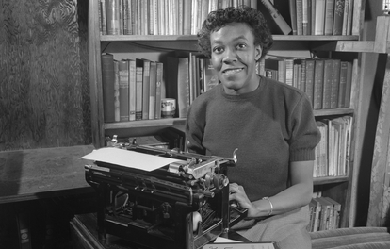
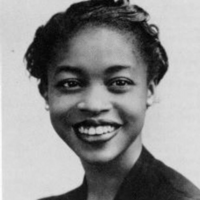
Gwendolyn Elizabeth Brooks (June 7, 1917– December 3, 2000) was an American poet and teacher. She was the first African-American woman to win a Pulitzer prize when she was awarded the Pulitzer Prize for Poetry in 1950 for her second collection, Annie Allen. Throughout her career she received many more honors. She was appointed Poet Laureate of Illinois in 1968, a position held until her death and Poet Laureate Consultant in Poetry to the Library of Congress in 1985.

I'm just another person trying to spread this art in the form of words to convey an imagine that can't be seen but only heard. Don't expect a traditional poem cause my writing has no structure Hope you enjoy reading my work, please feel free to leave comments good or bad! I would love to hear what you all think of it.
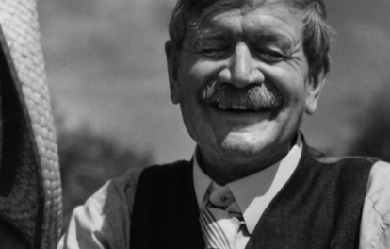
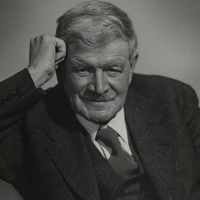
Stephen P. H. Butler Leacock, (30 December 1869 – 28 March 1944) was a Canadian teacher, political scientist, writer, and humorist. Between the years 1915 and 1925, he was the best-known English-speaking humorist in the world. He is known for his light humour along with criticisms of people’s follies. The Stephen Leacock Memorial Medal for Humour was named in his honour. Early life Stephen Leacock was born in Swanmore, a village near Southampton in southern England. He was the third of the eleven children born to (Walter) Peter Leacock (b.1834), who was born and grew up at Oak Hill on the Isle of Wight, an estate that his grandfather had purchased after returning from Madeira where his family had made a fortune out of plantations and Leacock’s Madeira wine, founded in 1760. Stephen’s mother, Agnes, was born at Soberton, the youngest daughter by his second wife (Caroline Linton Palmer) of the Rev. Stephen Butler, of Bury Lodge, the Butler estate that overlooked the village of Hambledon, Hampshire. Stephen Butler (for whom Leacock was named), was the maternal grandson of Admiral James Richard Dacres and a brother of Sir Thomas Dacres Butler, Usher of the Black Rod. Leacock’s mother was the half-sister of Major Thomas Adair Butler, who won the Victoria Cross at the siege and capture of Lucknow. Peter’s father, Thomas Murdock Leacock J.P., had already conceived plans eventually to send his son out to the colonies, but when he discovered that at age eighteen Peter had married Agnes Butler without his permission, almost immediately he shipped them out to South Africa where he had bought them a farm. The farm in South Africa failed and Stephen’s parents returned to Hampshire, where he was born. When Stephen was six, he came out with his family to Canada, where they settled on a farm near the village of Sutton, Ontario, and the shores of Lake Simcoe. Their farm in the township of Georgina in York County was also unsuccessful, and the family was kept afloat by money sent from Leacock’s paternal grandfather. His father became an alcoholic; in the fall of 1878, he travelled west to Manitoba with his brother E.P. Leacock (the subject of Stephen’s book My Remarkable Uncle, published in 1942), leaving behind Agnes and the children. Stephen Leacock, always of obvious intelligence, was sent by his grandfather to the elite private school of Upper Canada College in Toronto, also attended by his older brothers, where he was top of the class and was chosen as head boy. Leacock graduated in 1887, and returned home to find that his father had returned from Manitoba. Soon after, his father left the family again and never returned. There is some disagreement about what happened to Peter Leacock; some suggest that he went to live in Argentina, while other sources indicate that he moved to Nova Scotia and changed his name to Lewis. In 1887, seventeen-year-old Leacock started at University College at the University of Toronto, where he was admitted to the Zeta Psi fraternity. His first year was bankrolled by a small scholarship, but Leacock found he could not return to his studies the following year because of financial difficulties. He left university to work as a teacher—an occupation he disliked immensely—at Strathroy, Uxbridge and finally in Toronto. As a teacher at Upper Canada College, his alma mater, he was able simultaneously to attend classes at the University of Toronto and, in 1891, earn his degree through part-time studies. It was during this period that his first writing was published in The Varsity, a campus newspaper. Academic and political life Disillusioned with teaching, in 1899 he began graduate studies at the University of Chicago under Thorstein Veblen, where he received a doctorate in political science and political economy. He moved from Chicago, Illinois to Montreal, Quebec, where he eventually became the William Dow Professor of Political Economy and long-time chair of the Department of Economics and Political Science at McGill University. He was closely associated with Sir Arthur Currie, former commander of the Canadian Corps in the Great War and principal of McGill from 1919 until his death in 1933. In fact, Currie had been a student observing Leacock’s practice teaching in Strathroy in 1888. In 1936, Leacock was forcibly retired by the McGill Board of Governors—an unlikely prospect had Currie lived. Leacock was both a social conservative and a partisan Conservative. He opposed giving women the right to vote, and had a mixed record on non-Anglo-Saxon immigration, having written both in support of expanding immigration beyond Anglo-Saxons prior to World War II and in opposition to expanding Canadian immigration beyond Anglo Saxons near the close of World War II. He was a staunch champion of the British Empire and the Imperial Federation Movement and went on lecture tours to further the cause. Despite his conservatism, he was a staunch advocate for social welfare legislation and wealth redistribution. Although Prime Minister R.B. Bennett asked him to be a candidate for the 1935 Dominion election, Leacock declined the invitation. Nevertheless, he would stump for local Conservative candidates at his summer home. Literary life Early in his career, Leacock turned to fiction, humour, and short reports to supplement (and ultimately exceed) his regular income. His stories, first published in magazines in Canada and the United States and later in novel form, became extremely popular around the world. It was said in 1911 that more people had heard of Stephen Leacock than had heard of Canada. Also, between the years 1915 and 1925, Leacock was the most popular humorist in the English-speaking world. A humorist particularly admired by Leacock was Robert Benchley from New York. Leacock opened correspondence with Benchley, encouraging him in his work and importuning him to compile his work into a book. Benchley did so in 1922, and acknowledged the nagging from north of the border. Near the end of his life, the American comedian Jack Benny recounted how he had been introduced to Leacock’s writing by Groucho Marx when they were both young vaudeville comedians. Benny acknowledged Leacock’s influence and, fifty years after first reading him, still considered Leacock one of his favorite comic writers. He was puzzled as to why Leacock’s work was no longer well known in the United States. During the summer months, Leacock lived at Old Brewery Bay, his summer estate in Orillia, across Lake Simcoe from where he was raised and also bordering Lake Couchiching. A working farm, Old Brewery Bay is now a museum and National Historic Site of Canada. Gossip provided by the local barber, Jefferson Short, provided Leacock with the material which would become Sunshine Sketches of a Little Town (1912), set in the thinly-disguised Mariposa. Although he wrote learned articles and books related to his field of study, his political theory is now all but forgotten. Leacock was awarded the Royal Society of Canada’s Lorne Pierce Medal in 1937, nominally for his academic work. “The proper punishment for the Hohenzollerns, and the Hapsburgs, and the Mecklenburgs, and the Muckendorfs, and all such puppets and princelings, is that they should be made to work; and not made to work in the glittering and glorious sense, as generals and chiefs of staff, and legislators, and land-barons, but in the plain and humble part of labourers looking for a job. (Leacock 1919: 9)” Memorial Medal for Humour The Stephen Leacock Associates is a foundation chartered to preserve the literary legacy of Stephen Leacock, and oversee the annual award of the Stephen Leacock Memorial Medal for Humour. It is a prestigious honour, given to encourage Canadian humour writing and awarded for the best in Canadian humour writing. The foundation was instituted in 1946 and awarded the first Leacock Medal in 1947. The presentation occurs in June each year at the Stephen Leacock Award Dinner, at the Geneva Park Conference Centre in Orillia, Ontario. Personal life Leacock was born in England in 1869. His father, Peter Leacock, and his mother, Agnes Emma Butler Leacock, were both from well-to-do families. The family, eventually consisting of eleven children, immigrated to Canada in 1876, settling on a one hundred-acre farm in Sutton, Ontario. There Stephen was home-schooled until he was enrolled in Upper Canada College, Toronto. He became the head boy in 1887, and then entered the University of Toronto to study languages and literature. Despite completing two years of study in one year, he was forced to leave the university because his father had abandoned the family. Instead, Leacock enrolled in a three-month course at Strathroy Collegiate Institute to become a qualified high school teacher. His first appointment was at Uxbridge High School, Ontario, but he was soon offered a post at Upper Canada College, where he remained from 1889 through 1899. At this time, he also resumed part-time studies at the University of Toronto, graduating with a B.A. in 1891. However, Leacock’s real interests were turning towards economics and political theory, and in 1899 he was accepted for postgraduate studies at the University of Chicago, where he earned his PhD in 1903 In 1900 Leacock married Beatrix Hamilton, niece of Sir Henry Pellatt, who had built Casa Loma, the largest castle in North America. In 1915, after 15 years of marriage, the couple had their only child, Stephen Lushington Leacock. While Leacock doted on the boy, it soon became apparent that “Stevie” suffered from a lack of growth hormone. Growing to be only four feet tall, he had a love-hate relationship with Leacock, who tended to treat him like a child. Beatrix died in 1925 due to breast cancer. Leacock was offered a post at McGill University, where he remained until he retired in 1936. In 1906, he wrote Elements of Political Science, which remained a standard college textbook for the next twenty years and became his most profitable book. He also began public speaking and lecturing, and he took a year’s leave of absence in 1907 to speak throughout Canada on the subject of national unity. He typically spoke on national unity or the British Empire for the rest of his life. Leacock began submitting articles to the Toronto humor magazine Grip in 1894, and soon was publishing many humorous articles in Canadian and American magazines. In 1910, he privately published the best of these as Literary Lapses. The book was spotted by a British publisher, John Lane, who brought out editions in London and New York, assuring Leacock’s future as a writer. This was confirmed by Literary Lapses (1910), Nonsense Novels (1911) – probably his best books of humorous sketches—and by the more sentimental favorite, Sunshine Sketches of a Little Town (1912). John Lane introduced the young cartoonist Annie Fish to illustrate his 1913 book Behind the Beyond. Leacock’s humorous style was reminiscent of Mark Twain and Charles Dickens at their sunniest—for example in his even and satisfying My Discovery of England (1922). However, his Arcadian Adventures with the Idle Rich (1914) is a darker collection that satirizes city life. Collections of sketches continued to follow almost annually at times, with a mixture of whimsy, parody, nonsense, and satire that was never bitter. Leacock was enormously popular not only in Canada but in the United States and Britain. In later life, Leacock wrote on the art of humor writing and also published biographies of Twain and Dickens. After retirement, a lecture tour to western Canada led to his book My Discovery of the West: A Discussion of East and West in Canada (1937), for which he won the Governor General’s Award. He also won the Mark Twain medal and received a number of honorary doctorates. Other nonfiction books on Canadian topics followed and he began work on an autobiography. Leacock died of throat cancer in Toronto in 1944. A prize for the best humour writing in Canada was named after him, and his house at Orillia on the banks of Lake Couchiching became the Stephen Leacock Museum. Death and tributes Predeceased by Trix (who had died of breast cancer in 1925), Leacock was survived by son Stevie (Stephen Lushington Leacock (1915–1974). In accordance with his wishes, after his death from throat cancer, Leacock was buried in the St George the Martyr Churchyard (St. George’s Church, Sibbald Point), Sutton, Ontario Shortly after his death, Barbara Nimmo, his niece, literary executor and benefactor, published two major posthumous works: Last Leaves (1945) and The Boy I Left Behind Me (1946). His physical legacy was less treasured, and his abandoned summer cottage became derelict. It was rescued from oblivion when it was declared a National Historic Site of Canada in 1958 and ever since has operated as a museum called the Stephen Leacock Museum National Historic Site. In 1947, the Stephen Leacock Award was created to meet the best in Canadian literary humour. In 1969, the centennial of his birth, Canada Post issued a six-cent stamp with his image on it. The following year, the Stephen Leacock Centennial Committee had a plaque erected at his English birthplace and a mountain in the Yukon was named after him. A number of buildings in Canada are named after Leacock, including the Stephen Leacock Building at McGill University, Stephen Leacock Public School in Ottawa, a theatre in Keswick, Ontario, and a school Stephen Leacock Collegiate Institute in Toronto. Screen adaptations Two Leacock short stories have been adapted as National Film Board of Canada animated shorts by Gerald Potterton: My Financial Career and The Awful Fate of Melpomenus Jones. Sunshine Sketches, based on Sunshine Sketches of a Little Town, aired on CBC Television in 1952–1953; it was the first Canadian broadcast of an English-language dramatic series, as it debuted on the first night that television was broadcast in Toronto. In 2012, a screen adaptation based on Sunshine Sketches of a Little Town was aired on CBC Television to celebrate both the 75th anniversary of the CBC and the 100th anniversary of Leacock’s original collection of short stories. The recent screen adaptation featured Gordon Pinsent as a mature Leacock. Bibliography Fiction * Literary Lapses (1910) * Nonsense Novels (1911) * Sunshine Sketches of a Little Town (1912) * Behind the Beyond (1913)– illustrated by Annie Fish. * Arcadian Adventures with the Idle Rich (1914) * Moonbeams from the Larger Lunacy (1915) * Further Foolishness (1916) * Essays and Literary Studies (1916) * Frenzied Fiction (1918) * The Hohenzollerns in America (1919) * Winsome Winnie (1920) * My Discovery of England (1922) * College Days (1923) * Over the Footlights (1923) * The Garden of Folly (1924) * Winnowed Wisdom (1926) * Short Circuits (1928) * The Iron Man and the Tin Woman (1929) * Laugh With Leacock (1930) * The Dry Pickwick (1932) * Afternoons in Utopia (1932) * Hellements of Hickonomics in Hiccoughs of Verse Done in Our Social Planning Mill (1936) * Model Memoirs (1938) * Too Much College (1939) * My Remarkable Uncle (1942) * Happy Stories (1943) * How to Write (1943) * Last Leaves (1945) * My Lost Dollar Non-fiction * Elements of Political Science (1906) * Baldwin, Lafontaine, Hincks: Responsible Government (1907) * Practical Political Economy (1910) * Adventurers of the Far North (1914) * The Dawn of Canadian History (1914) * The Mariner of St. Malo: a chronicle of the voyages of Jacques Cartier (1914) * The Unsolved Riddle of Social Justice (1920) * Mackenzie, Baldwin, Lafontaine, Hincks (1926) * Economic Prosperity in the British Empire (1930) * The Economic Prosperity of the British Empire (1931) * Humour: Its Theory and Technique, with Examples and Samples (1935) * The Greatest Pages of American Humor (1936) * Humour and Humanity (1937) * Here Are My Lectures (1937) * My Discovery of the West (1937) * Our British Empire (1940) * Canada: The Foundations of Its Future (1941) * Our Heritage of Liberty (1942) * Montreal: Seaport and City (1942) * Canada and the Sea (1944) * While There Is Time (1945) * My Lost Dollar Biography * Mark Twain (1932) * Charles Dickens: His Life and Work (1933) Autobiography * The Boy I Left Behind Me (1946) Quotations * "Lord Ronald … flung himself upon his horse and rode madly off in all directions."—Nonsense Novels, “Gertrude the Governess”, 1911 * “Professor Leacock has made more people laugh with the written word than any other living author. One may say he is one of the greatest jesters, the greatest humorist of the age.”—A. P. Herbert * “Mr Leacock is as 'bracing’ as the seaside place of John Hassall’s famous poster. His wisdom is always humorous, and his humour is always wise.”—Sunday Times * “He is still inimitable. No one, anywhere in the world, can reduce a thing to ridicule with such few short strokes. He is the Grock of literature.”—Evening Standard * “I detest life-insurance agents: they always argue that I shall some day die, which is not so.” * “Hockey captures the essence of Canadian experience in the New World. In a land so inescapably and inhospitably cold, hockey is the chance of life, and an affirmation that despite the deathly chill of winter we are alive.” References Wikipedia—https://en.wikipedia.org/wiki/Stephen_Leacock
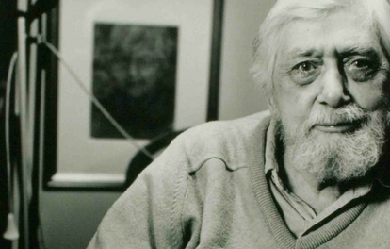
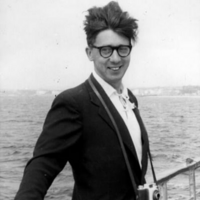
Edwin George Morgan (27 April 1920 – 17 August 2010) was a Scottish poet and translator who was associated with the Scottish Renaissance. He is widely recognised as one of the foremost Scottish poets of the 20th century. In 1999, Morgan was made the first Glasgow Poet Laureate. In 2004, he was named as the first Scottish national poet: The Scots Makar. Life and career Morgan was born in Glasgow and grew up in Rutherglen. His parents were Presbyterian. As a child he was not surrounded by books, nor did he have any literary acquaintances. Schoolmates labelled him a swot. He convinced his parents to finance his membership of several book clubs in Glasgow. The Faber Book of Modern Verse (1936) was a “revelation” to him, he later said. Morgan entered the University of Glasgow in 1937. It was at university that he studied French and Russian, while self-educating in “a good bit of Italian and German” as well. After interrupting his studies to serve in World War II as a non-combatant conscientious objector with the Royal Army Medical Corps, Morgan graduated in 1947 and became a lecturer at the University. He worked there until his retirement as a full professor in 1980. Morgan described ‘CHANGE RULES!’ as 'the supreme graffito’, whose liberating double-take suggests both a lifelong commitment to formal experimentation and his radically democratic left-wing political perspectives. From traditional sonnet to blank verse, from epic seriousness to camp and ludic nonsense; and whether engaged in time-travelling space fantasies or exploring contemporary developments in physics and technology, the range of Morgan’s voices is a defining attribute. Morgan first outlined his sexuality in Nothing Not Giving Messages: Reflections on his Work and Life (1990). He had written many famous love poems, among them “Strawberries” and “The Unspoken”, in which the love object was not gendered; this was partly because of legal problems at the time but also out of a desire to universalise them, as he made clear in an interview with Marshall Walker. At the opening of the Glasgow LGBT Centre in 1995, he read a poem he had written for the occasion, and presented it to the Centre as a gift. In 2002, he became the patron of Our Story Scotland. At the Opening of the Scottish Parliament building in Edinburgh on 9 October 2004, Liz Lochhead read a poem written especially for the occasion by Morgan, titled “Poem for the Opening of the Scottish Parliament”. She was announced as Morgan’s successor as Scots Makar in January 2011. Near the end of his life, Morgan reached a new audience after collaborating with the Scottish band Idlewild on their album The Remote Part. In the closing moments of the album’s final track "In Remote Part/ Scottish Fiction", he recites a poem, “Scottish Fiction”, written specifically for the song. In 2007, Morgan contributed two poems to the compilation Ballads of the Book, for which a range of Scottish writers created poems to be made into songs by Scottish musicians. Morgan’s songs “The Good Years” and “The Weight of Years” were performed by Karine Polwart and Idlewild respectively. Nobel Laureate Seamus Heaney "[paid] formal homage" during a 2005 visit. In later life Morgan was cared for at a residential home as his health worsened. He published a collection in April 2010, months before his death, titled Dreams and Other Nightmares to mark his 90th birthday. Up until his death, he was the last survivor of the canonical 'Big Seven’ (the others being Hugh MacDiarmid, Robert Garioch, Norman MacCaig, Iain Crichton Smith, George Mackay Brown, and Sorley MacLean). On 17 August 2010, Edwin Morgan died of pneumonia in Glasgow, Scotland, at the age of 90. The Scottish Poetry Library made the announcement in the morning. Tributes came from, among others, politicians Alex Salmond and Iain Gray, as well as Carol Ann Duffy, the UK Poet Laureate. Testamentary provisions First Minister of Scotland Alex Salmond’s leader’s speech to the Scottish National Party Conference at Inverness on 22 October 2011 referred to Morgan’s bequest of £918,000 to the party in his will as “transformational”. The next day it was announced that all of the bequest would be used for the party’s independence referendum campaign. Morgan also left £45,000 to a number of friends, former colleagues and charity organisations and set aside another £1 million for the creation of an annual award scheme for young poets in Scotland. Poetry Morgan worked in a wide range of forms and styles, from the sonnet to concrete poetry. His Collected Poems appeared in 1990. He has also translated from a wide range of languages, including Russian, Hungarian, French, Italian, Latin, Spanish, Portuguese, German and Old English (Beowulf). Many of these are collected in Rites of Passage. Selected Translations (1976). His 1952 translation of Beowulf has become a standard translation in America. Morgan was also influenced by the American beat poets, with their simple, accessible ideas and language being prominent features in his work. In 1968 Morgan wrote a poem entitled Starlings In George Square. This poem could be read as a comment on society’s reluctance to accept the integration of different races. Other people have also considered it to be about the Russian Revolution in which “Starling” could be a reference to “Stalin”. Other notable poems include: The Death of Marilyn Monroe (1962) – an outpouring of emotion after the death of one of the world’s most talented women. The Billy Boys (1968) – flashback of the gang warfare in Glasgow led by Billy Fullerton in the Thirties. Glasgow 5 March 1971 – robbery by two youths by pushing an unsuspecting couple through a shop window on Sauchiehall Street In the Snackbar – concise description of an encounter with a disabled pensioner in a Glasgow restaurant. A Good Year for Death (26 September 1977) – a description of five famous people from the world of popular culture who died in 1977 Poem for the Opening of the Scottish Parliament – which was read by Liz Lochhead at the opening ceremony because he was too ill. (9 October 2004) Books Awards and honours * 1972 PEN Memorial Medal (Hungary) * 1982 OBE * 1983 Saltire Society Scottish Book of the Year Award for Poems of Thirty Years * 1985 Soros Translation Award (New York) * 1998 Stakis Prize for Scottish Writer of the Year for Virtual and Other Realities * 2000 Queen’s Gold Medal for Poetry * 2001 Oxford-Weidenfeld Translation Prize for Jean Racine: Phaedra * 2002 The Saltire Society’s Andrew Fletcher of Saltoun award for notable service to Scotland * 2003 Jackie Forster Memorial Award for Culture * 2003 Lifetime Achievement Award for Literature, from the Saltire Society and the Scottish Arts Council * 2007 T. S. Eliot Prize for A Book of Lives. * 2008 Scottish Arts Council Book of the Year Award References Wikipedia—https://en.wikipedia.org/wiki/Edwin_Morgan_(poet)

Most of what I write or enjoy reading has a significant amount of word relationships and phrasing that evoke imagery. Whether it's prose on people or life or metered rhyming verses I find that the way they read should have not just metaphor, word plays, and all other typical "poetic" usage, but should also have a visual quality that is some what like painting or illustration. I'm not saying I do this well in my own writing but I'm merely stating what I am going for as an artist. Like anything creative, the more of yourself you put into it and dedicate time to, the better it ultimately becomes. The collection of poems that are subtitled Nest in the Black Tree is a series of concept pieces. The setting is in the Bad Lands (purgatory). When a "Soul" has been born it belongs to the Watch Tower(God). Once one is created the Clock Maker creates a "vessel"(a human body). The Time Keeper starts the Heart-Break-Timer and this would be the life one is given from begining, life, old age, and the end. When the timer runs out the soul must be delivered back to the Watch Tower, but to do so is tasked by the Sprinter(an angel). The Sprinter takes the soul across the Bad Lands running as God's Speed. The Bad Lands are filled by an evil race known as the Wretched. The Wretches are ruled by the war machine Brontus Singlairn. Brontus wants the souls the Sprinters carry to turn them from a life into a Wretch(demon). The Poems are free-verse prose left open to to the imagination of the reader and to the foundation of the story. "Space, Universe, Stars" are part of the idea of creating a setting, being that this is a place of the in "between", and also is a way to give a little more poetic depth. One day I would hope to get the "The Nest and the Black Tree" published. This is where you, the reader, comes in to give me comments and ideas for this evolving story. —Nicholas Gress —Saidwhattha
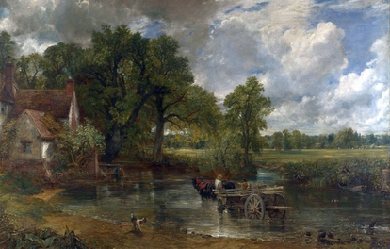
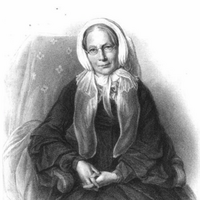
Ann Taylor (30 January 1782– 20 December 1866) was an English poet and literary critic. In her youth she was a writer of verse for children, for which she achieved long-lasting popularity. In the years immediately preceding her marriage, she became an astringent literary critic of growing reputation. She is, however, best remembered as the elder sister and collaborator of Jane Taylor. The literary family The Taylor sisters were part of an extensive literary family, daughters of Isaac Taylor of Ongar. Ann was born in Islington and lived with her family at first in London and later in Lavenham in Suffolk, in Colchester and, briefly, in Ongar. The sisters’ father, Isaac Taylor, was, like his own father, an engraver. He later became an educational pioneer and Independent minister and wrote a number of instructional books for the young. Their mother, Mrs (Ann Martin) Taylor (1757–1830) wrote seven works of moral and religious advice– in many respects liberal for their time– two of them fictionalized. Ann and Jane’s brothers, Isaac and Jefferys, also wrote, the former being a theologian, but also the inventor of a patent beer tap. The elder brother Charles Taylor edited The Literary Panorama, for which he wrote on topics from art to politics, and produced, anonymously, a massive annotated translation of Augustin Calmet’s Dictionary of the Bible. His younger brother Josiah was a publisher, chiefly of works on architecture and design. Authorship The sisters and their authorship of various works have often been confused, usually to Jane’s advantage. This is in part because their early works for children were published together and without attribution, but also because Jane, by dying young at the height of her powers, unwittingly attracted early posthumous eulogies, including what is almost a hagiography by her brother Isaac, and much of Ann’s work came to be ascribed to Jane, a borrowing which, Ann ruefully remarked, she could ill afford and which Jane certainly did not require. It is true that Jane achieved much more than Ann as a writer of poetry for an adult readership– though Ann’s poem “The Maniac’s Song”, published in the Associate Minstrels (1810), was probably the finest short poem by either sister, and it has even been postulated that it was an inspiration for Keats’s La Belle Dame sans Merci (Lynette Felber: Ann Taylor’s “The Maniac’s Song”: an unacknowledged source for Keats’s “La Belle Dame sans Merci”. However, Ann also deserves to be remembered as a writer of prose, as evinced particularly by her autobiography and by the many letters of hers that survive. Her style is strong and vivid and, when she is not too preoccupied with moral and religious themes– like her sister Jane, she tended to pessimism about her own spiritual worth– it is often shot through with a pleasing and sometimes acerbic wit. The autobiography also provides much detailed and fascinating information about the life of a moderately prosperous dissenting family in the late 18th and early 19th centuries. Appreciations Ann Taylor’s son, Josiah Gilbert, wrote: “Two little poems– 'My Mother’, and 'The Star’, are perhaps, more frequently quoted than any. The first, a lyric of life, was by Ann, the second, of nature, by Jane; and they illustrate this difference between the sisters.” Both poems attracted the compliment of frequent parody throughout the 19th century. The logician Augustus De Morgan asserted (somewhat extravagantly) that Gilbert’s mother wrote “one of the most beautiful lyrics in the English language, or any other language” and not knowing that Ann Gilbert was still alive, called upon Tennyson to supply a less heterodox version of the final stanza, which seemed to de Morgan unworthy of the rest. Original Poems for Infant Minds by several young persons (by Ann and Jane and others) was first issued in two volumes in 1804 and 1805. Rhymes for the Nursery followed in 1806, and Hymns for Infant Minds in 1808. In Original Poems for Infant Minds the authors were identified for each poem. In Rhymes for the Nursery (1806) poems were not identified by author. Attributions for the sisters’ poems can be found in an exceptional Taylor resource: The Taylors of Ongar: An Analytical Bio-Bibliography by Christina Duff Stewart. Stewart cites a copy of Rhymes for the Nursery belonging to a nephew, Canon Isaac Taylor, annotated to indicate the respective authorship of Ann and Jane. Stewart also confirms attributions of Original Poems based on publisher’s records. Marriage and widowhood On 24 December 1813, Ann married Joseph Gilbert, an Independent (later Congregational) minister and theologian, and left Ongar to make a new home far from her family, at Masborough near Rotherham. A widower of thirty-three, Gilbert had proposed to Ann before he had even met her, forming a sound estimation of her character and intelligence from her writings, particularly as a trenchant critic in The Eclectic Review. Gilbert was, at the time of their marriage, the classical tutor at Rotherham Independent College– the nearest thing to a university open to dissenters at this time– and simultaneously pastor of the Nether Chapel in Sheffield. In 1817, he moved to the pastorate of the Fish Street Chapel in Hull and then, in 1825, to Nottingham, serving in chapels in the city for the rest of his life. Kept busy with the duties of wife and later mother, Ann Gilbert still managed to write poems, hymns, essays, and letters. Her interest in public matters, such as atheism, prison reform, and the anti-slavery movement, often spurred her to take up her pen, and the results of those scattered moments found a way into print. Oddly for one of such independence of mind and strongly held and usually liberal opinions, she was firmly opposed to female suffrage. After Gilbert died on 12 December 1852, Ann found time to write a short memoir of her husband. Nor did she spend the rest of her long life in gentle retirement. As well as actively supporting the members of her large family, through visits and a constant stream of letters– family was always of central concern to the Taylors– she travelled widely in many parts of Britain, taking in her stride as an old lady travelling conditions that might have daunted one much younger. She died on 20 December 1866 and was buried next to her husband in Nottingham General Cemetery, although the inscription recording this on the vast Gothic sarcophagus has disappeared.
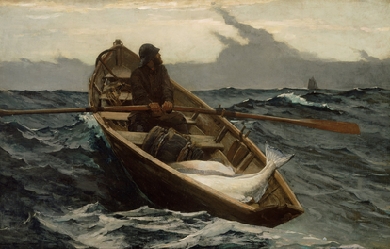

This blog started out as a form of therapy, a way to block out worries and stresses, but it has evolved into a way of feeling positive about my work and proud of what I have achieved. I have always loved poetry and it's great to have this corner to display what I have achieved.

When the world seems to go unfair, I use my poetry as my only escape. When my pen hits the paper I'am in a whole different world. I write about whatever im feeling at the moment. All my poetry rhymes, and it all comes from something ive went through or am currently dealing with. PLEASE feel free to comment your thoughts.



